Basements rarely bask in natural light, yet thoughtful illumination can turn those below-grade rooms into the star of the house. The right fixtures lift low ceilings, banish shadows, and even support healthier circadian rhythms. Designers in 2025 are leaning on layered, LED-driven solutions that merge function with flair, so you can binge-watch, craft, or host game night without a gloomy backdrop. Whether your basement is finished or still boasts open joists, the ideas that follow show how smart basement lighting choices add resale value and daily comfort — inviting you to explore every corner instead of avoiding the stairs.
1. Layered Basement Lighting Plan for All-Round Brightness
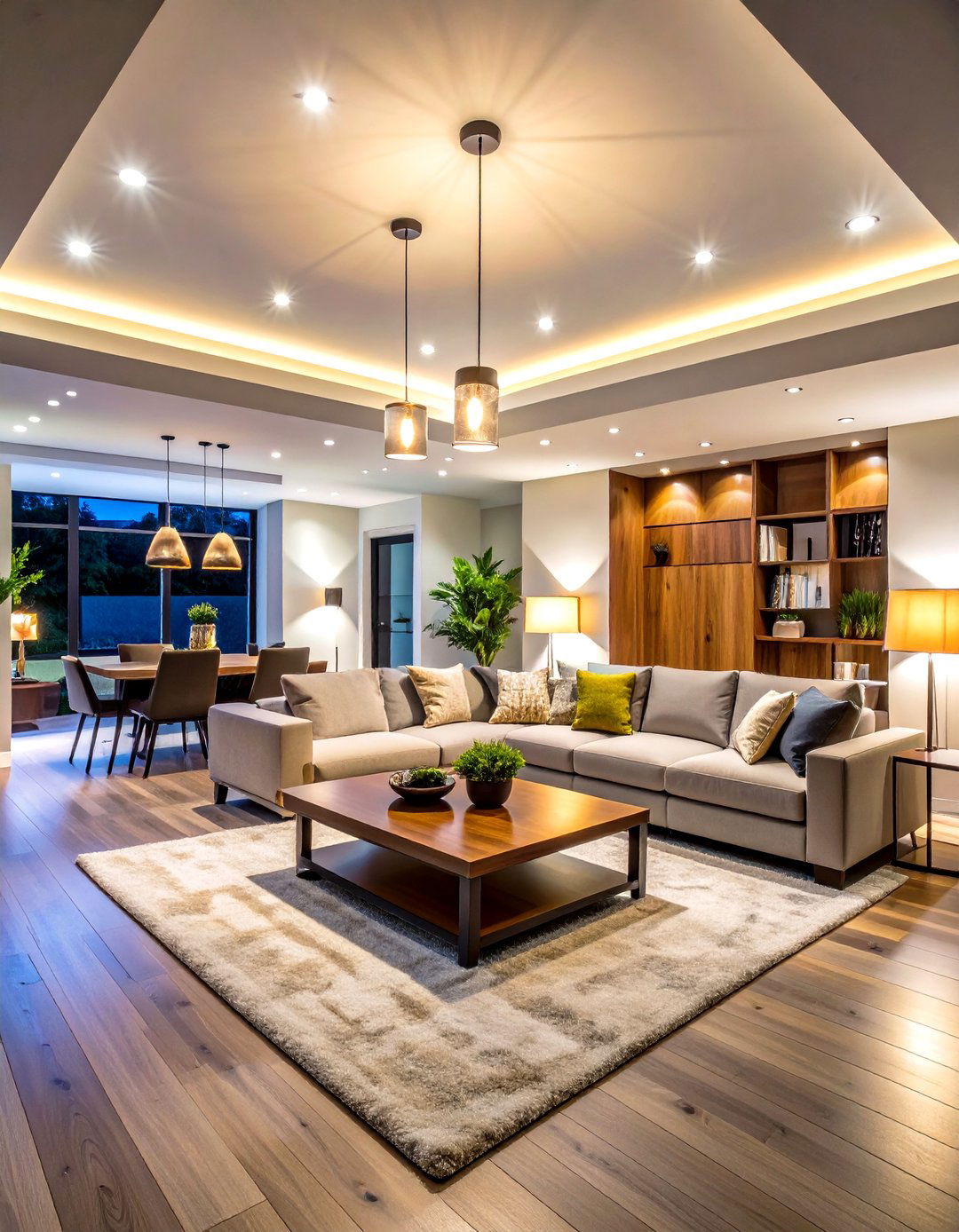
A well-layered basement lighting plan begins with ambient light, stacks on targeted task lamps, and finishes with a sprinkle of accent fixtures to create depth. Start by mapping activities — TV here, craft table there — then assign fixtures: recessed LEDs for an even glow, pendant or swing-arm lamps where concentration matters, and wall washers to highlight art or textural stone. Dimmers on each circuit let you dial mood up or down without wasting energy. This strategy mirrors professional design advice that stresses ambient, task, and accent as the “big three” for lower-level comfort.
2. Grid of Recessed LED Downlights Brightens the Basement Ceiling
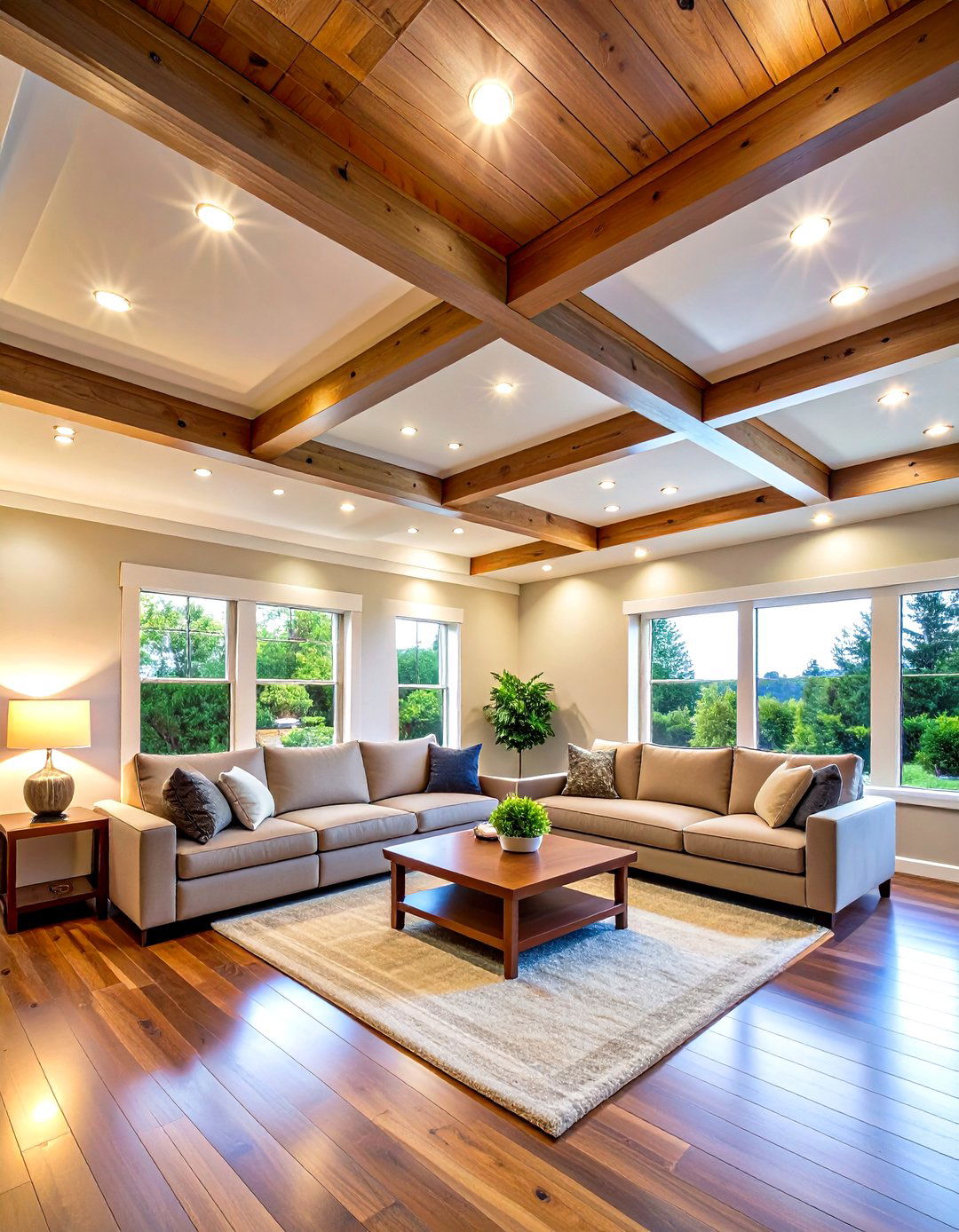
Unlike bulky cans of decades past, today’s ultra-thin LED downlights click between joists, preserving every inch of headroom. Lay them out in a loose grid — about four feet apart — to avoid shadowy pockets, and aim for roughly 20 lumens per square foot so hobbies feel effortless and eyestrain stays low. Because LEDs sip 75 % less power and last up to 50, 000 hours, you’ll barely notice them on the utility bill or the ladder. Pair each run with a dimmer rated for LEDs to prevent flicker and buzzing during movie night.
3. Adjustable Track Basement Lighting Lets You Re-Aim Anytime
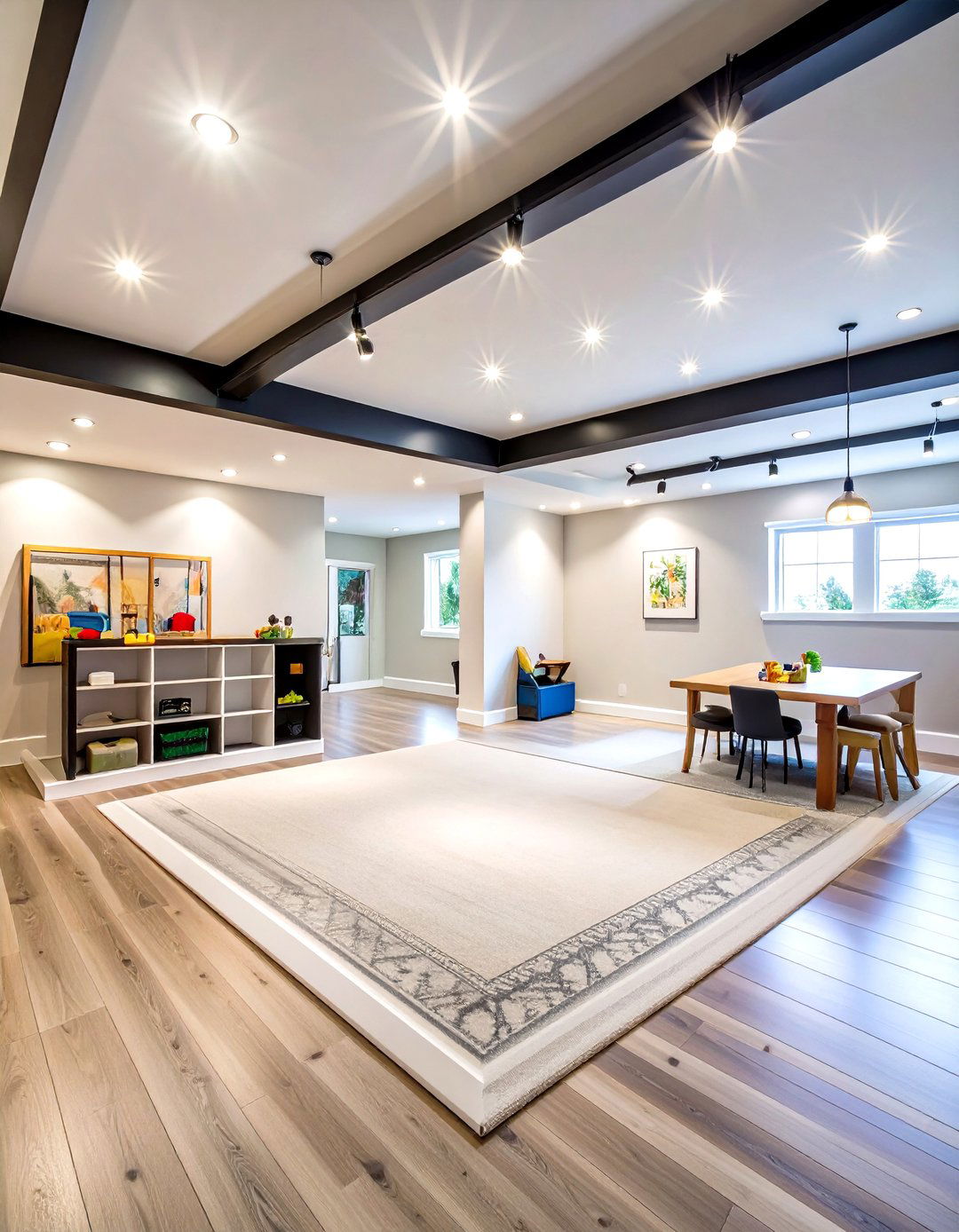
Strategically, track systems deliver basement lighting flexibility that fixed fixtures simply can’t. Snap in spot heads to highlight the dart board, swap for pendants above a new poker table, or slide lights toward art when the kids’ gallery expands. Modern low-profile tracks hug the ceiling, making them friendly to seven-foot heights. Designers featured in recent styling round-ups favor matte-black rails for an industrial edge or white channels that disappear entirely — proof you can be practical without sacrificing style.
4. Statement Pendants Elevate Functional Hotspots
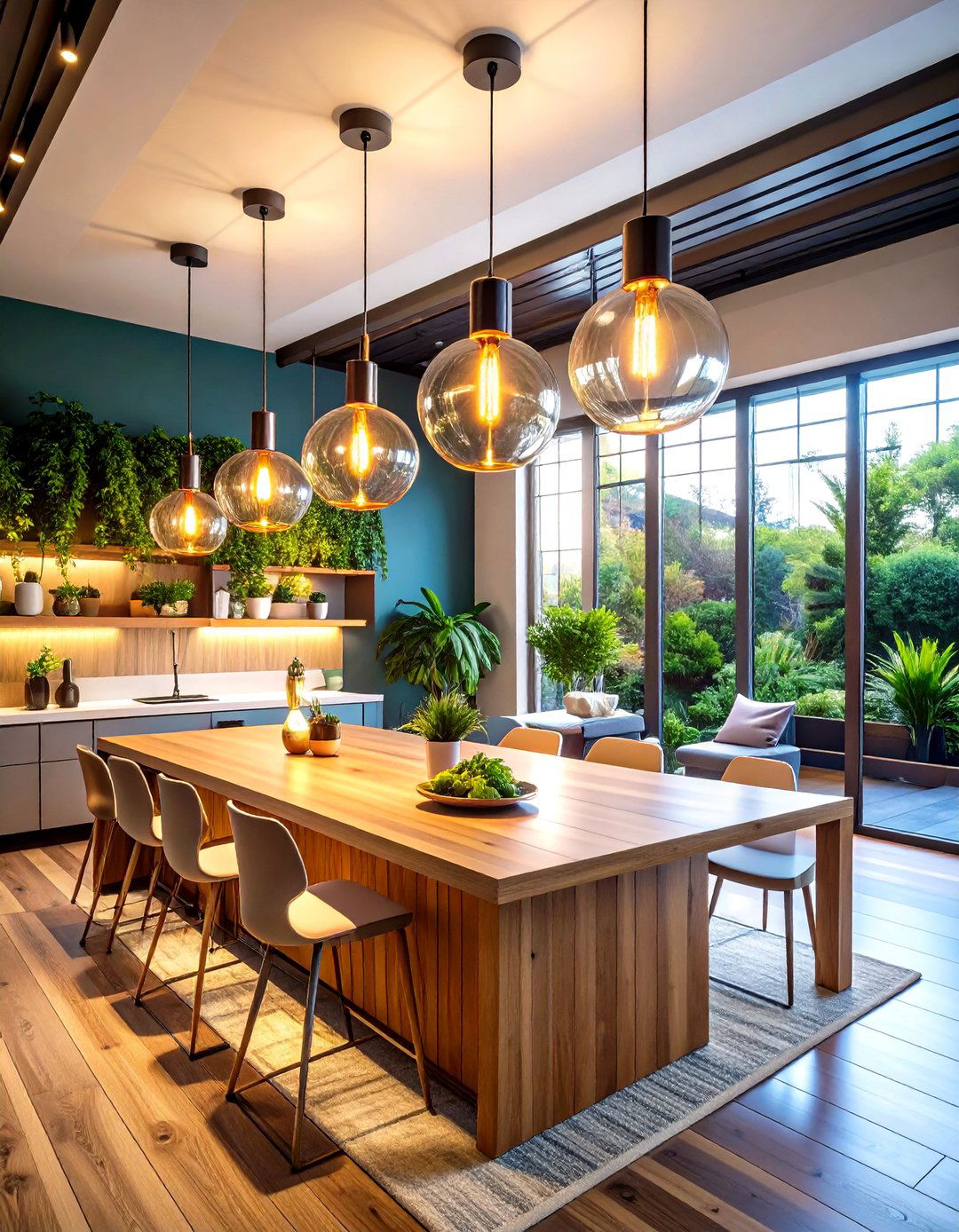
Consider hanging a trio of geometric pendants over the basement bar or craft island to double as décor and task lighting. Bold shapes — think asymmetrical clusters or ribbed-glass globes — follow 2025’s trend toward fixtures that moonlight as art. Choose adjustable-height cords so shades hover 30 – 36 inches above the counter, and select bulbs in the 3000 K “warm white” band for flattering skin tones during gatherings. Smart filament LEDs retain vintage charm while tapping modern efficiency, keeping the room stylish and sustainable.
5. Wall Sconces Chase Away Long Basement Shadows
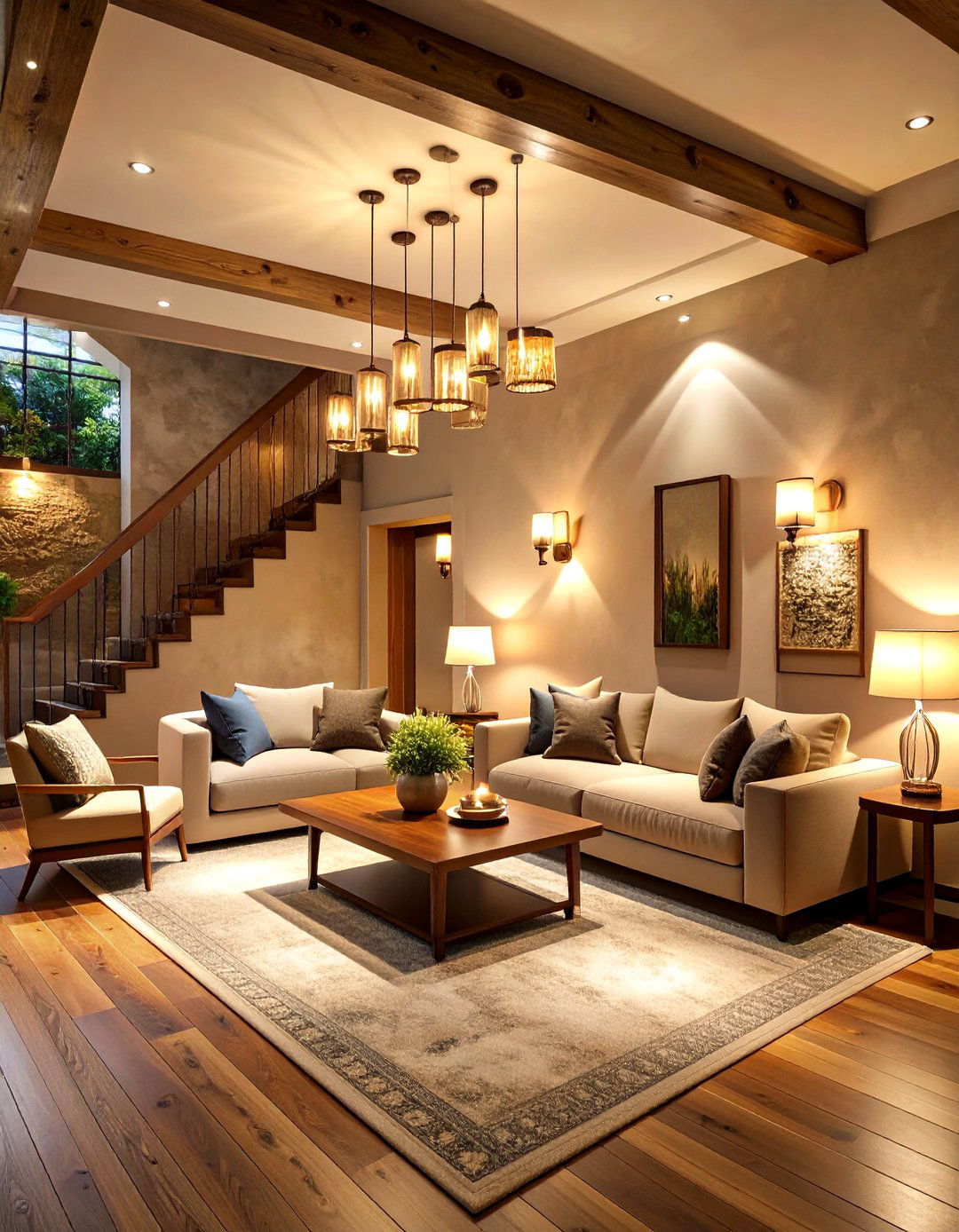
The basement’s length often creates cave-like corridors; wall sconces break that tunnel effect by introducing horizontal light at eye level. Opt for slim, upward-glow sconces on each side of the sofa or stagger them along stair walls for safer nighttime trips. Hard-wired fixtures look cleanest, but plug-in models with cord covers let renters upgrade without drywall surgery. Aim for opaque shades or frosted diffusers so the light blankets walls instead of blinding seated guests.
6. Subtle Cove Lighting That Washes Walls with Glow
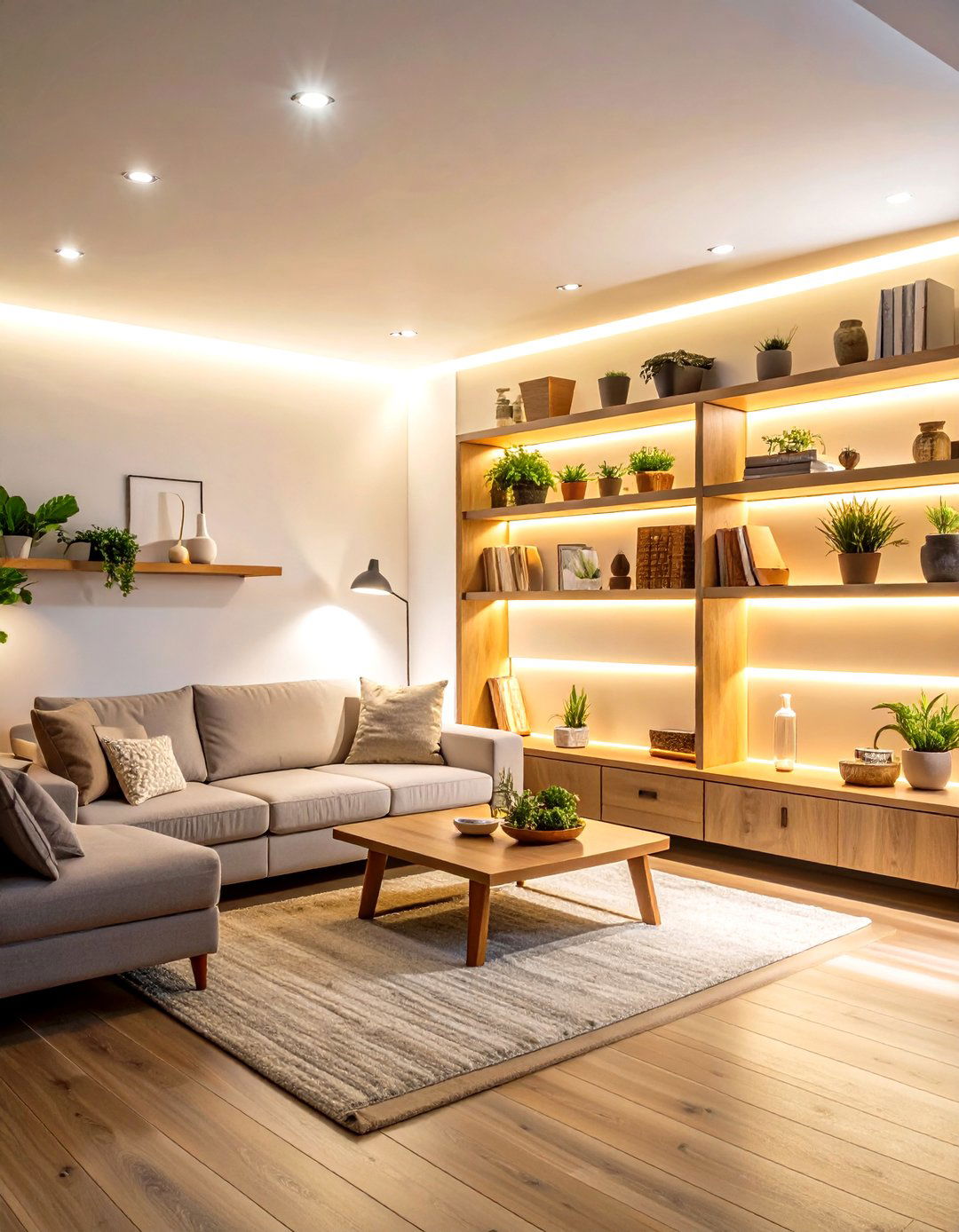
By tucking LED tape inside a ceiling valance or behind a floating shelf, you can bathe basement walls in soft, indirect light that visually stretches the space. Warm (2700 K) strips create a lounge vibe, while cooler (4000 K) versions sharpen play-room colors. Because tape lights weigh almost nothing and run cool, they’re ideal for DIYers: peel, stick, connect to a 24-volt driver, and hide the cord in a closet for a pro finish.
7. LED Strips Under Stairs and Handrails
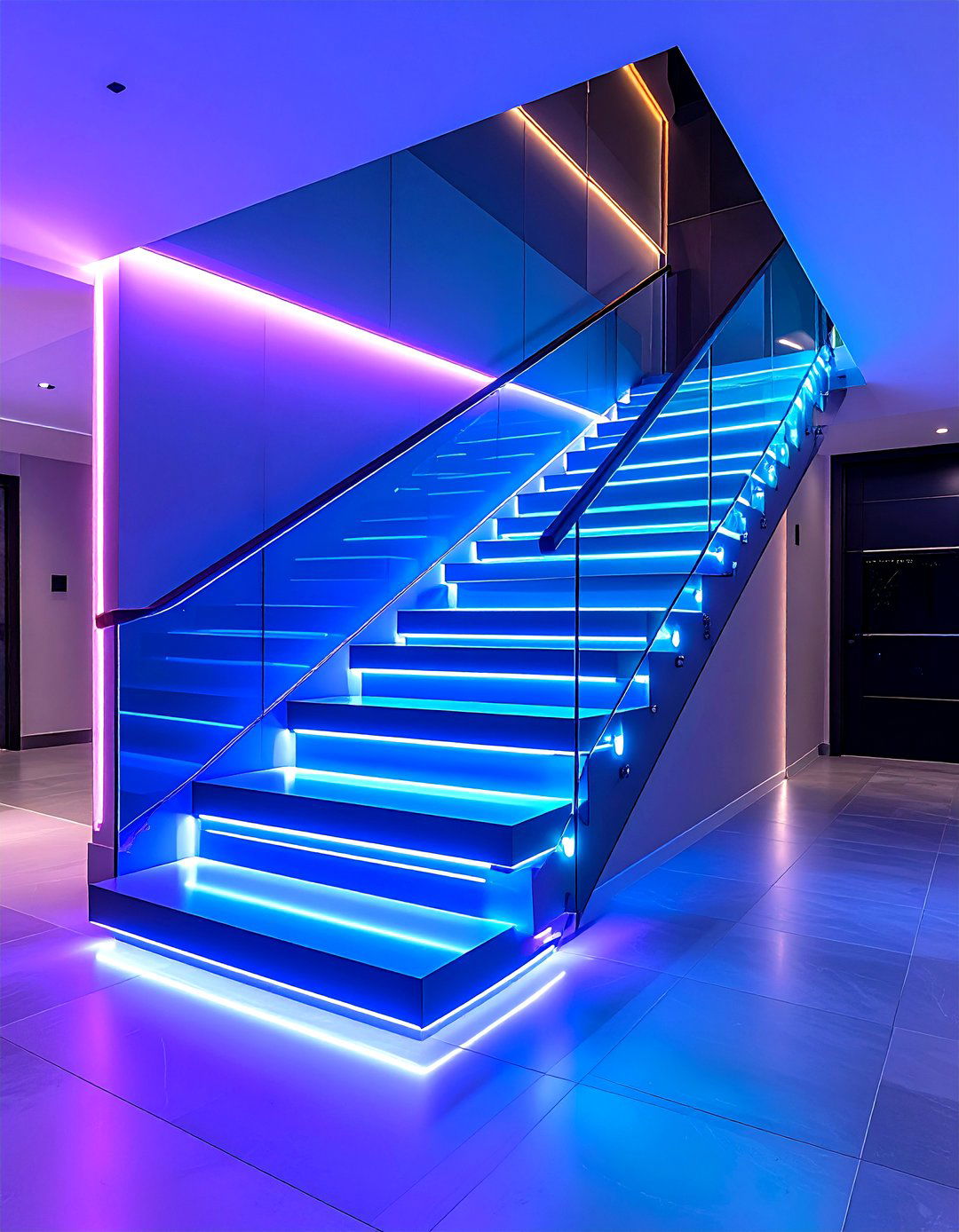
Certainly, nothing feels more futuristic than a staircase that glows. Mount waterproof LED strips beneath each step nosing or inside a handrail groove; tie them to a motion sensor so the path lights automatically when feet hit the first tread. Aside from looking slick, this basement lighting trick adds safety for kids carrying game consoles or relatives balancing laundry baskets. Choose strips rated at least IP65 to resist the occasional basement humidity.
8. Smart Color-Tunable Bulbs for Instant Atmosphere
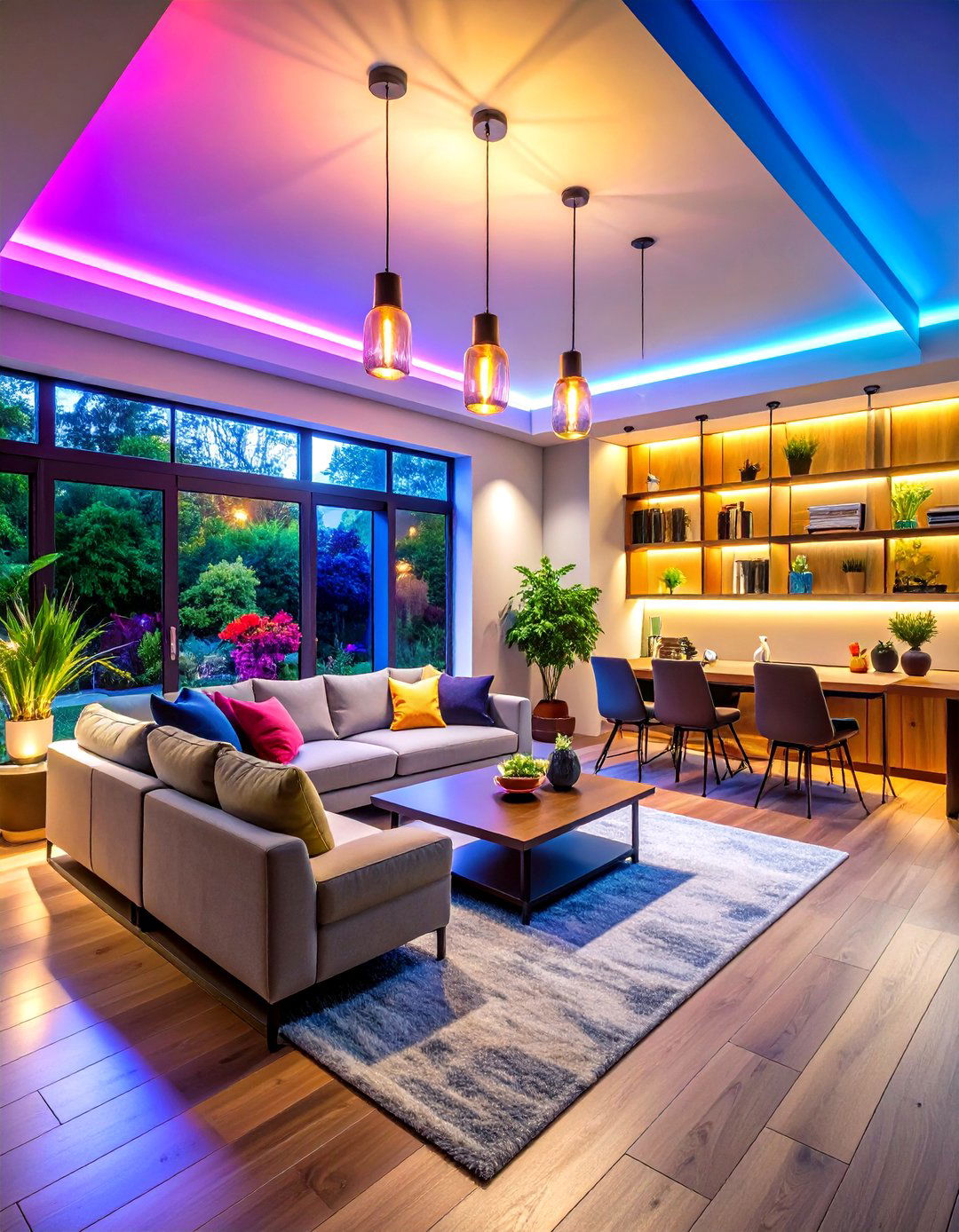
Surprisingly, a single app-controlled bulb can flip basement lighting from bright office to moody yoga den in seconds. Wi-Fi or Zigbee lamps change hue across millions of shades and dim without separate wiring — perfect for multipurpose lower-level spaces. Decor forecasters highlight mood lighting as a top 2025 priority, noting how adaptable tones support relaxation, energy, or concentration on demand. Just verify your home network reaches the basement, or add a mesh node for glitch-free performance.
9. Motion-Activated Step Lights for Safe Night Moves
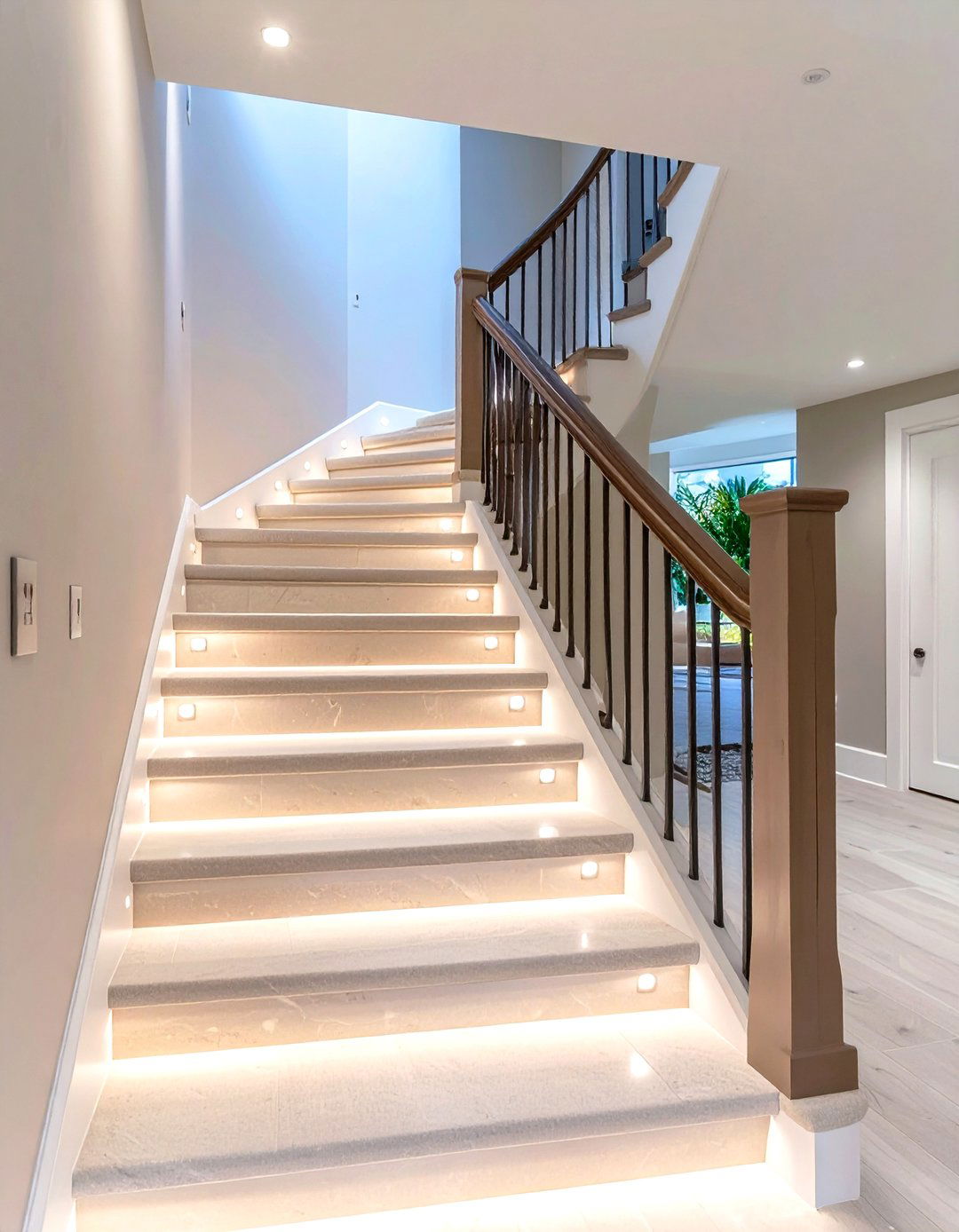
When midnight snack runs meet dark stairs, recessed LED step lights shine. Install puck-size fixtures every third riser or choose slim lateral strips that span the tread width. Integrated PIR sensors trigger illumination only when needed, trimming energy costs and bulb hours. Warm white (3000 K) prevents harsh glare that might jolt you fully awake, yet still guides sleepy feet safely back to bed.
10. Daylight-Balanced LEDs to Mimic Windows
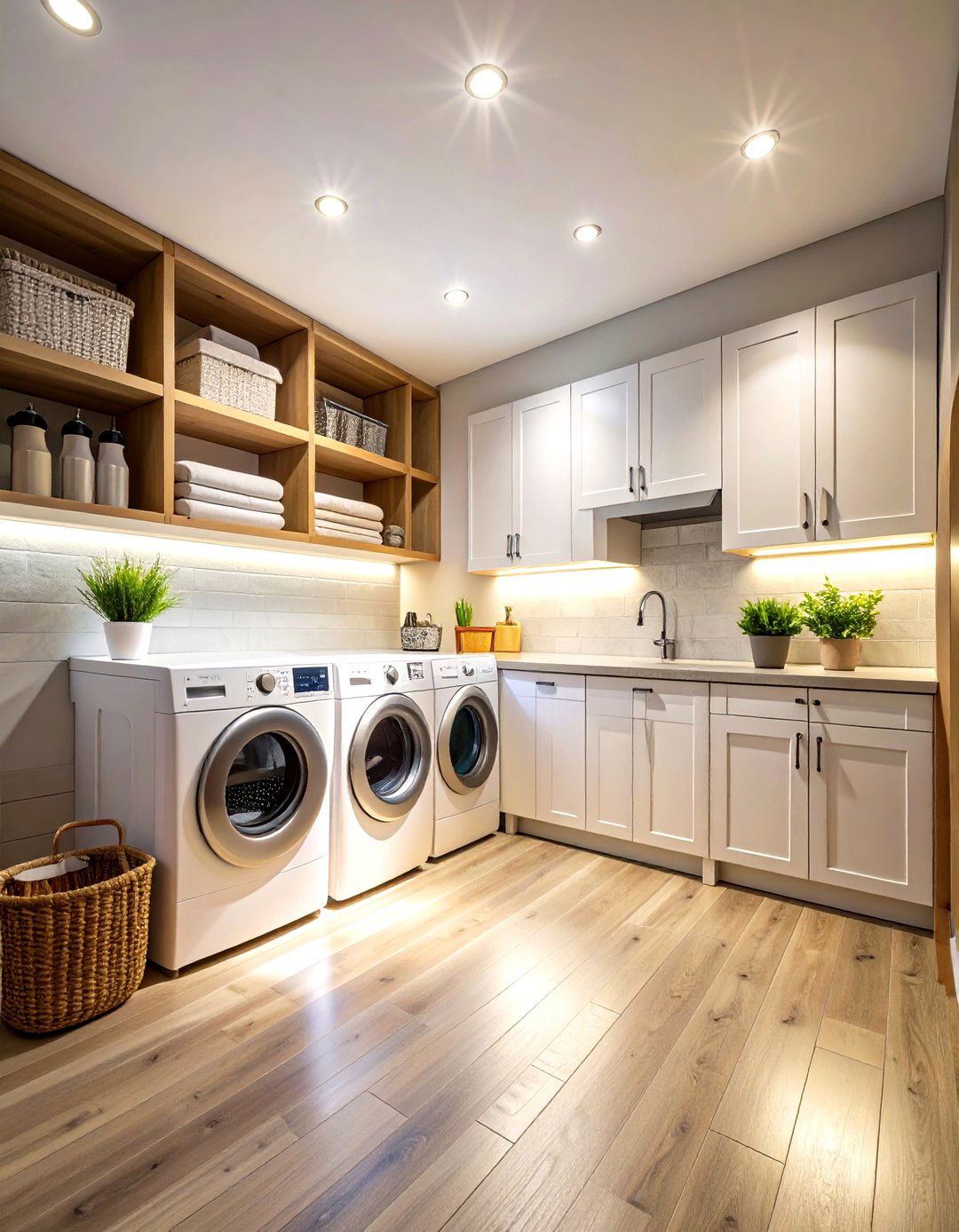
Looking to counter that windowless vibe? Daylight-balanced LEDs (5000 – 5500 K) replicate noon sun, making laundry corners feel cleaner and hobby benches more color-accurate. Because cooler tones read brighter, you can often lower total lumen output and still achieve an airy feel. Pair these bulbs with high Color Rendering Index (CRI 90+) ratings so paints and fabrics display true hues. Basements Plus recommends cool-white ranges for general living zones, reinforcing the daylight-mimic strategy.
11. Ultra-Slim Flush-Mount Fixtures for Low Ceilings
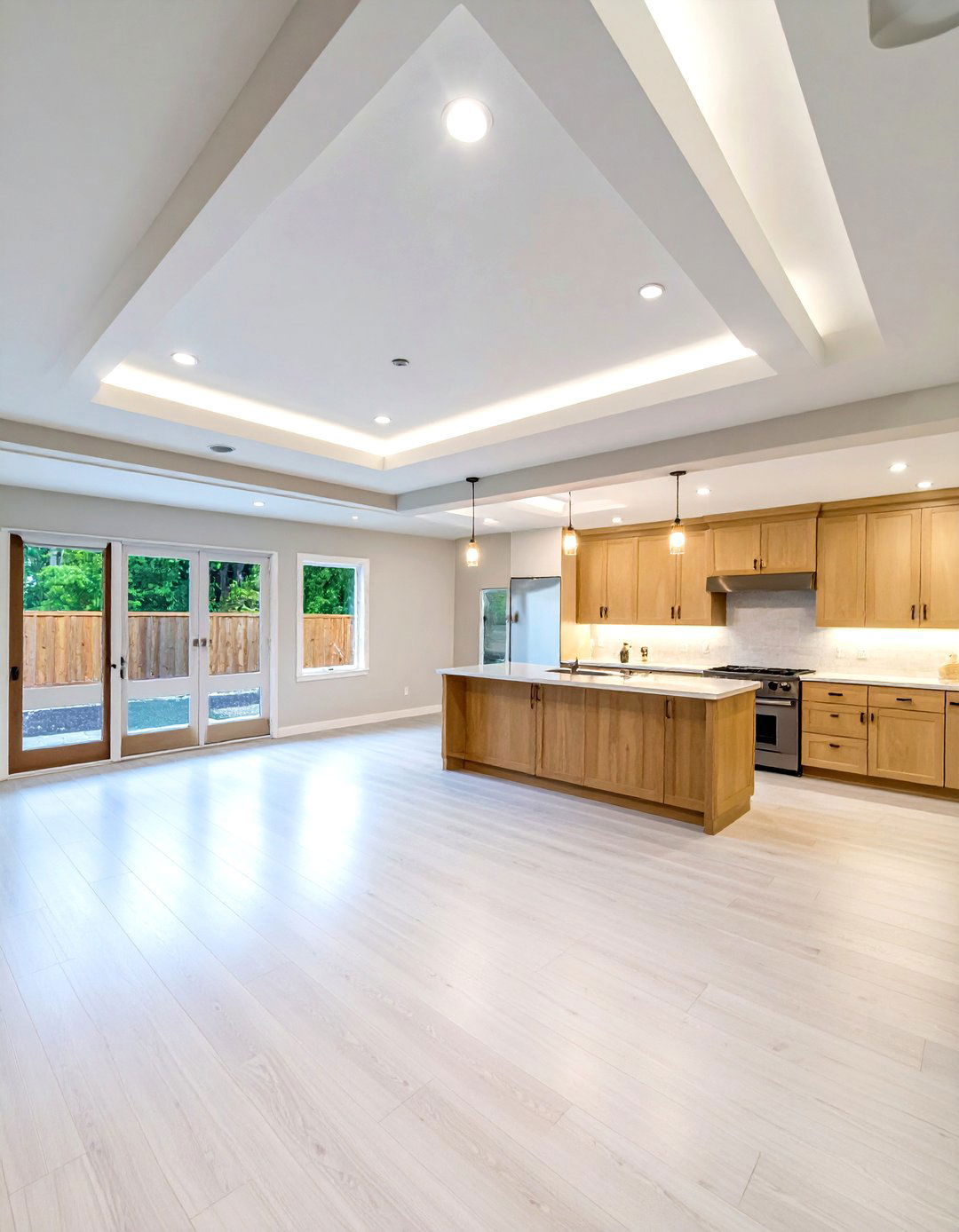
For basements where the HVAC plenum steals precious height, contemporary flush-mounts ride less than an inch off the drywall yet scatter light widely. Look for edge-lit LED designs; their perimeter diodes bounce illumination inward through a diffuser, eliminating hot spots. Because they screw into a standard junction box, swapping outdated domes is a Saturday project — rewarding you with modern style and head-bump safety.
12. Industrial-Style Suspension Lights in Unfinished Ceilings
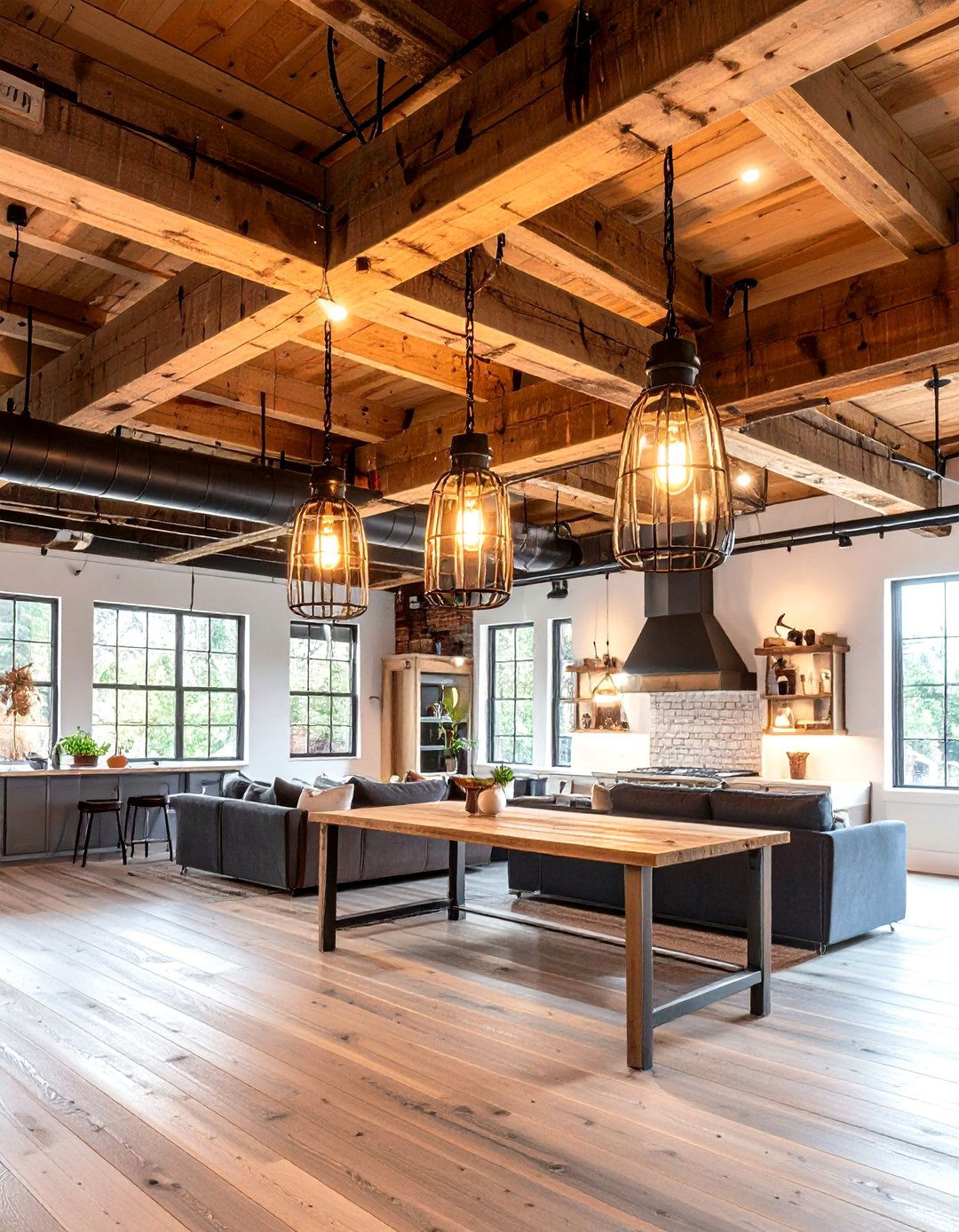
Despite a lack of drywall, an exposed-beam basement can still feel intentional. Suspend cage pendants or linear LEDs from chain so cords drape artistically against joists. This industrial-chic approach keeps wiring accessible for future tweaks and disguises pipes as part of the aesthetic. Use conduit paint in matte black to tie disparate mechanicals together and make the lights read cohesive rather than improvised.
13. Tall Floor Lamps with Reflective Uplight

Looking for plug-and-play basement lighting? Tall torchière floor lamps bounce light off ceilings, instantly brightening corners without drilling holes. Models featuring integrated LEDs push 3000 lumens upward while sipping just 40 watts. Place a pair behind sectionals to erase the cave feel and add dimmers on the cords for effortless ambiance control during movie marathons.
14. Under-Cabinet Task Lights in a Basement Kitchenette
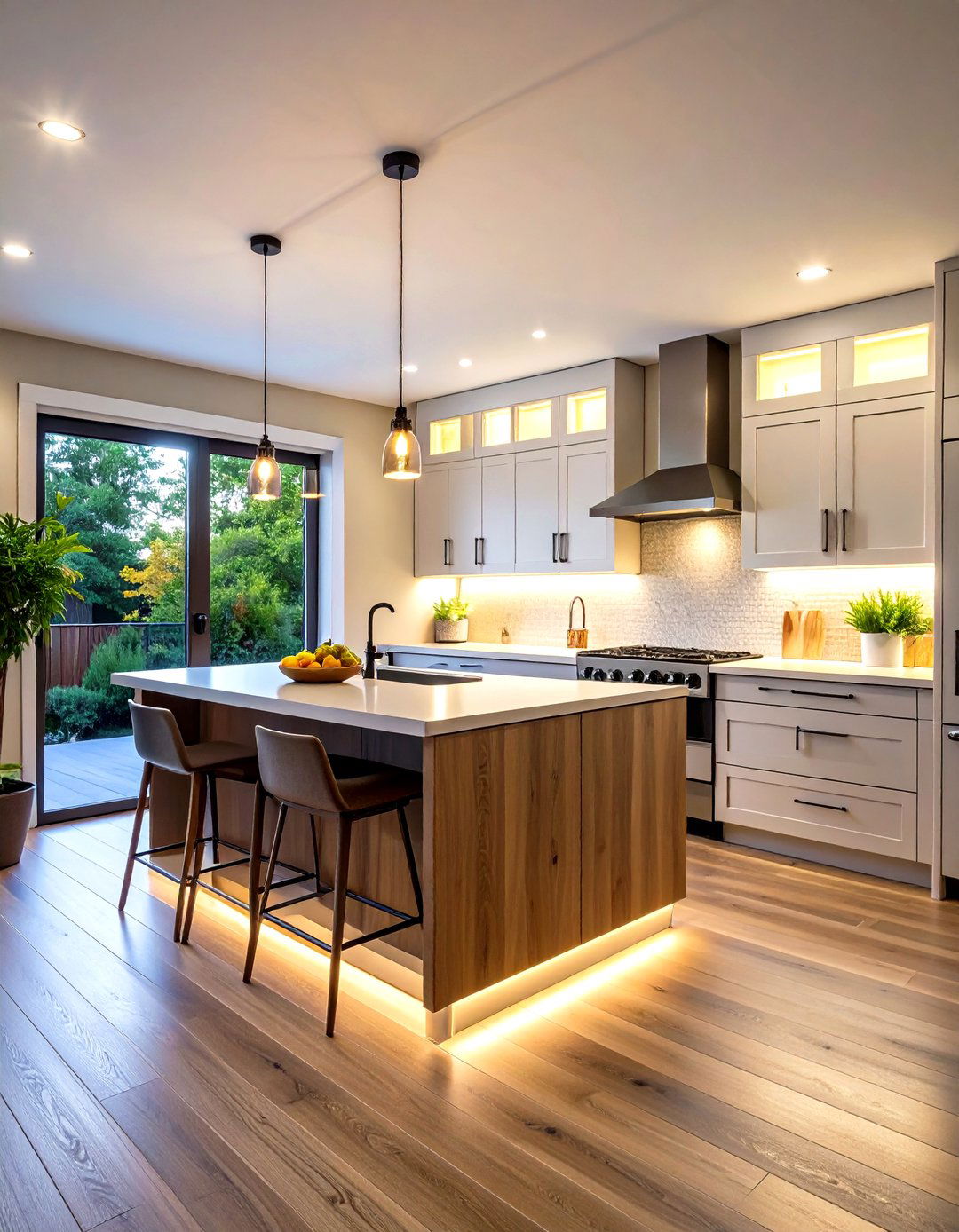
One smart basement upgrade is a snack bar or mini kitchen — but chopping limes under a single ceiling fixture invites shadows. Low-voltage LED bars mounted beneath upper cabinets deliver shadow-free task light exactly where blades meet cutting boards. Hard-wire strips to a switch for seamless use, or select battery versions for retrofitting existing cabinets without running new cable.
15. Plug-In Art Lights to Spotlight Collections
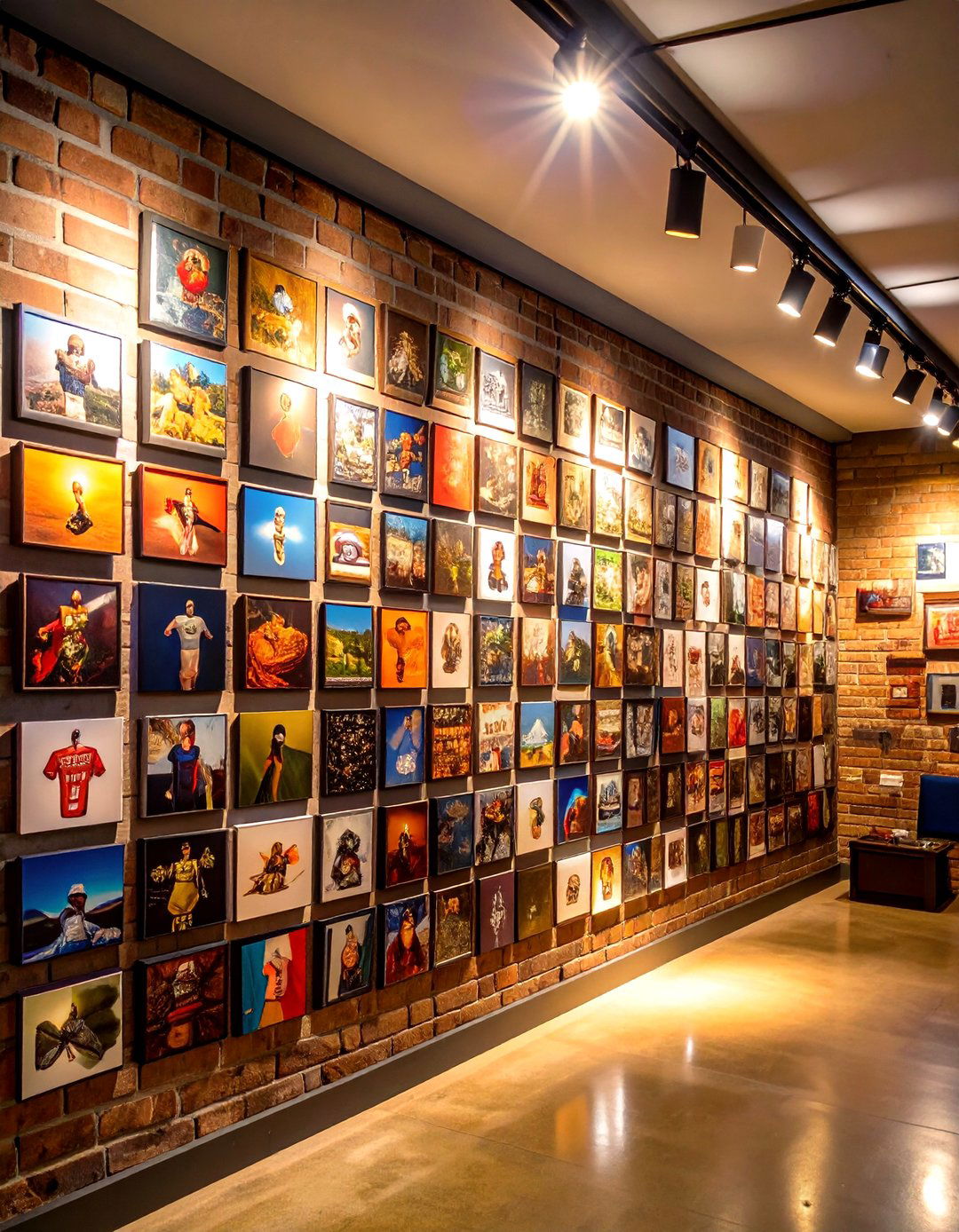
Bringing treasured memorabilia downstairs? Install slim, plug-in picture lights over framed jerseys or concert posters; directing a 3000 K beam downward highlights textures while preserving paper from UV harm. Some models swivel so you can perfect the angle as displays evolve. Use command-strip cord clips along trim to keep wires invisible without nail holes.
16. Fiber-Optic Star Ceiling for Cinematic Nights
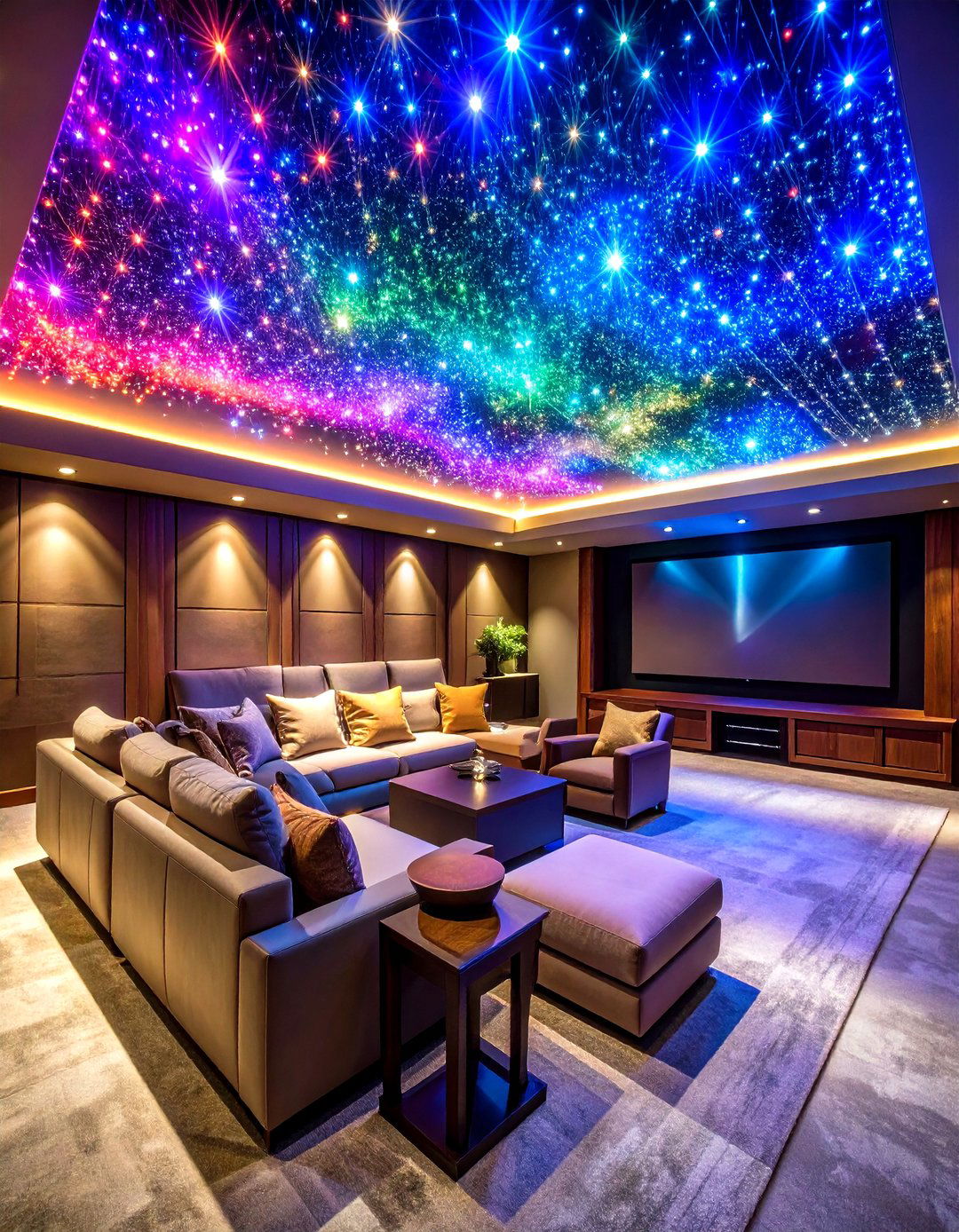
For a wow factor in home theaters, weave fiber-optic strands through an acoustic panel to simulate a starry sky. Because the projector’s heat stays in the remote light engine, the ceiling itself generates no warmth — a real boon in already-cool basements. Choose a kit with twinkle and color-shift wheels so constellations faintly shimmer as the movie rolls, immersing viewers in celestial ambiance.
17. Dimmable Rope Lighting Behind Crown Molding
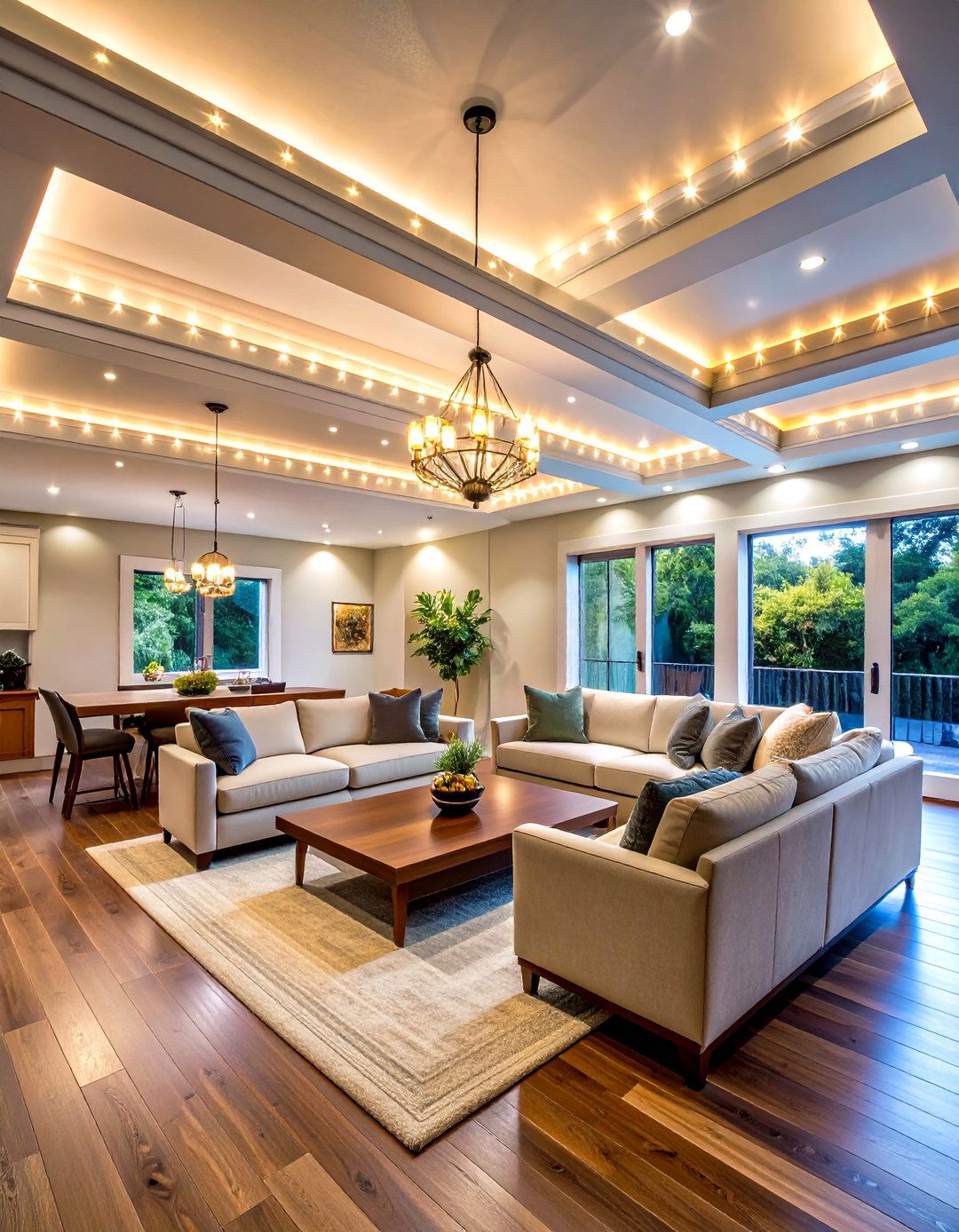
Owing to its gentle 360-degree glow, LED rope tucked behind crown molding creates a floating ceiling effect that visually raises height. Tie strips to an inexpensive wall-mount dimmer so the halo doubles as a night-light when family or guests crash on the sleeper sofa.
18. Shelf and Niche Accent Lighting to Show Décor
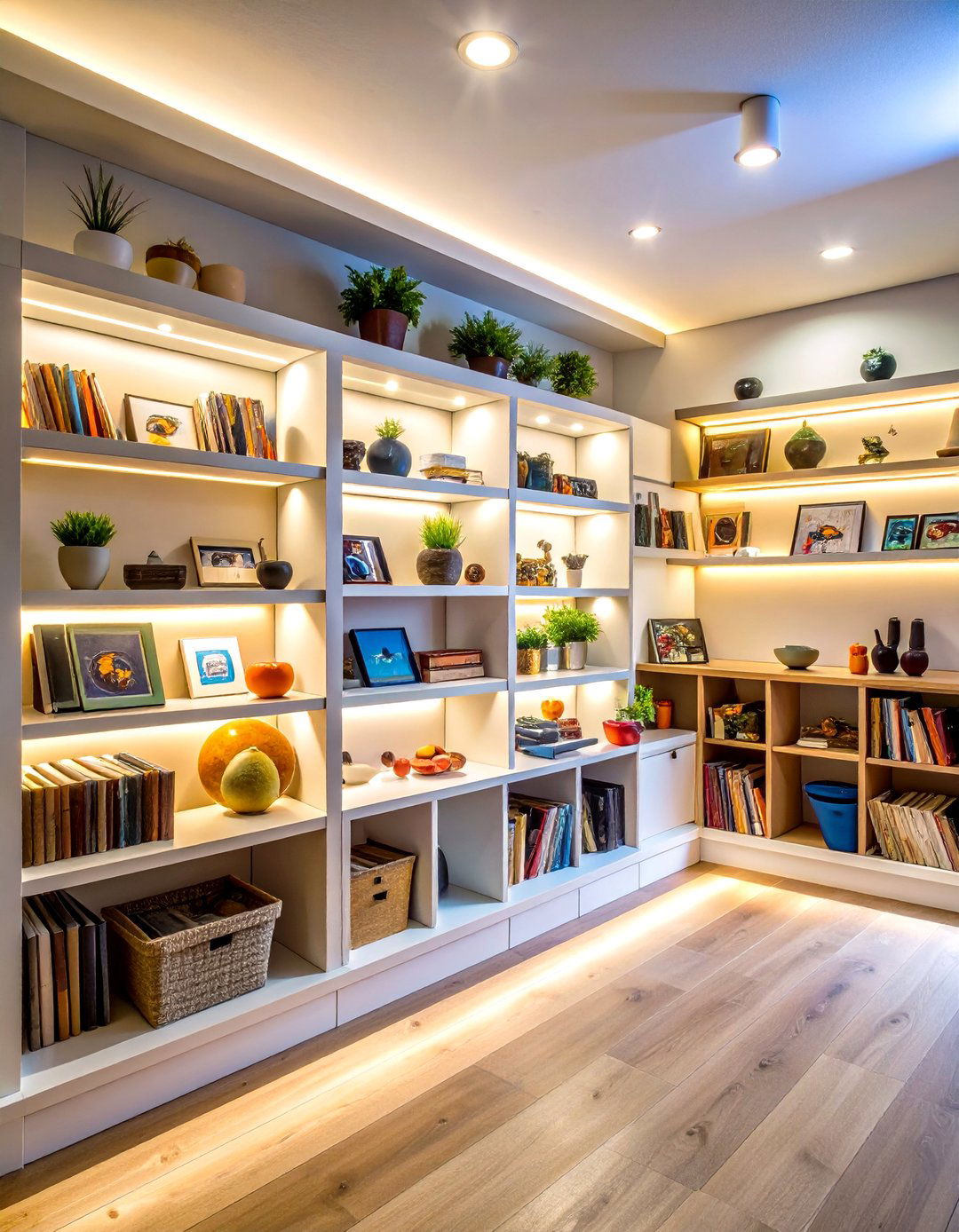
By adding micro LED pucks or tape to floating shelves, you can turn board-game boxes, vinyl records, or pottery into décor features. The gentle front-edge glow also acts as indirect room light, reducing reliance on overheads. For alcoves or built-in bookcases, run vertical strips up each side so contents glow evenly from top to bottom.
19. Portable Magnetic Work Lights for the DIY Bench
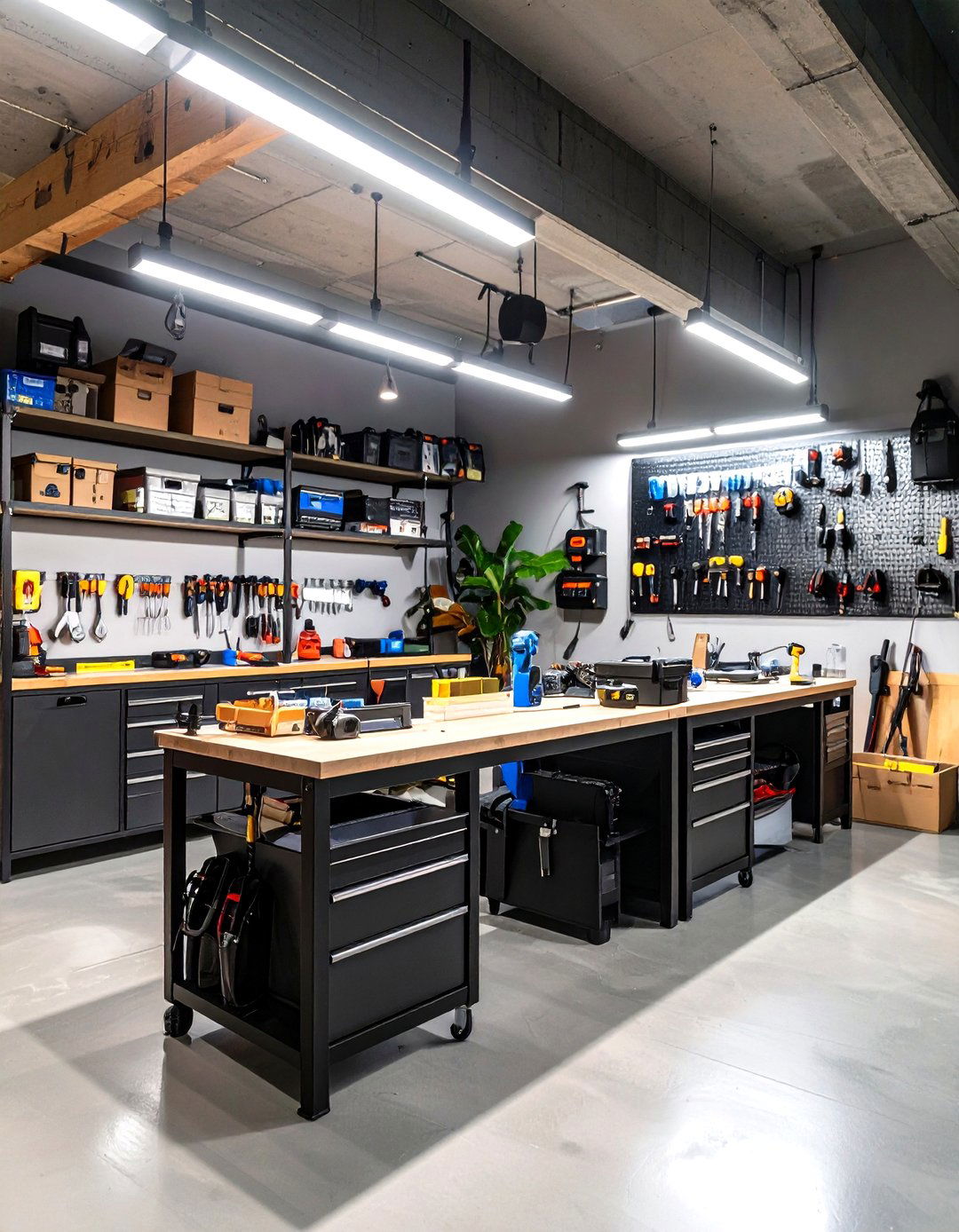
When woodworking or repairing bikes in the basement workshop, magnetic LED work lights cling to metal toolboxes or beams, aiming 1000+ lumens exactly where precision matters. Rechargeable lithium packs free you from outlet hunting, and multiple brightness modes preserve battery life for lighter tasks like sorting screws.
20. Solar or Light Tubes Bringing Real Sunlight
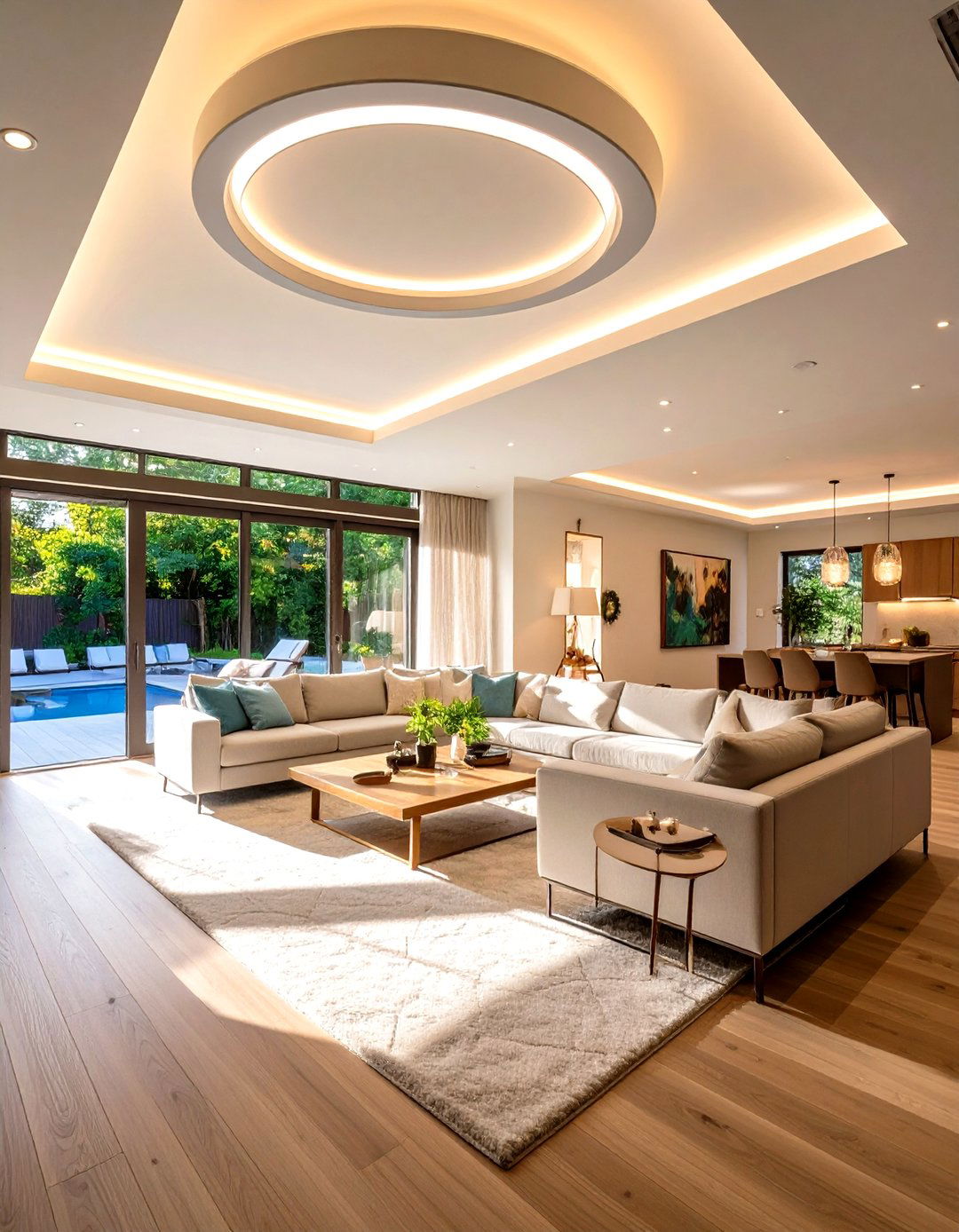
What, natural light in a basement? Yes — if ground level sits just above the ceiling joists, you can route sun tunnels or solar tubes from the side yard down through a chase. Highly reflective internal coatings capture daylight and pipe it into a diffusing lens, giving you true sun without enlarging egress windows. Add an integrated LED ring so the fixture doubles as electric light after dusk.
21. Beam and Joist Grazing with Spotlights

Highlighting raw wood beams or painted joists adds architectural drama and elongates sightlines. Surface-mount small spotlights at floor level, aiming upward so shadows accentuate grain. If ducts interrupt continuity, black-spray them before lighting; the void then fades and the illuminated texture commands attention.
22. RGBW Backlighting for Gaming and Media Walls
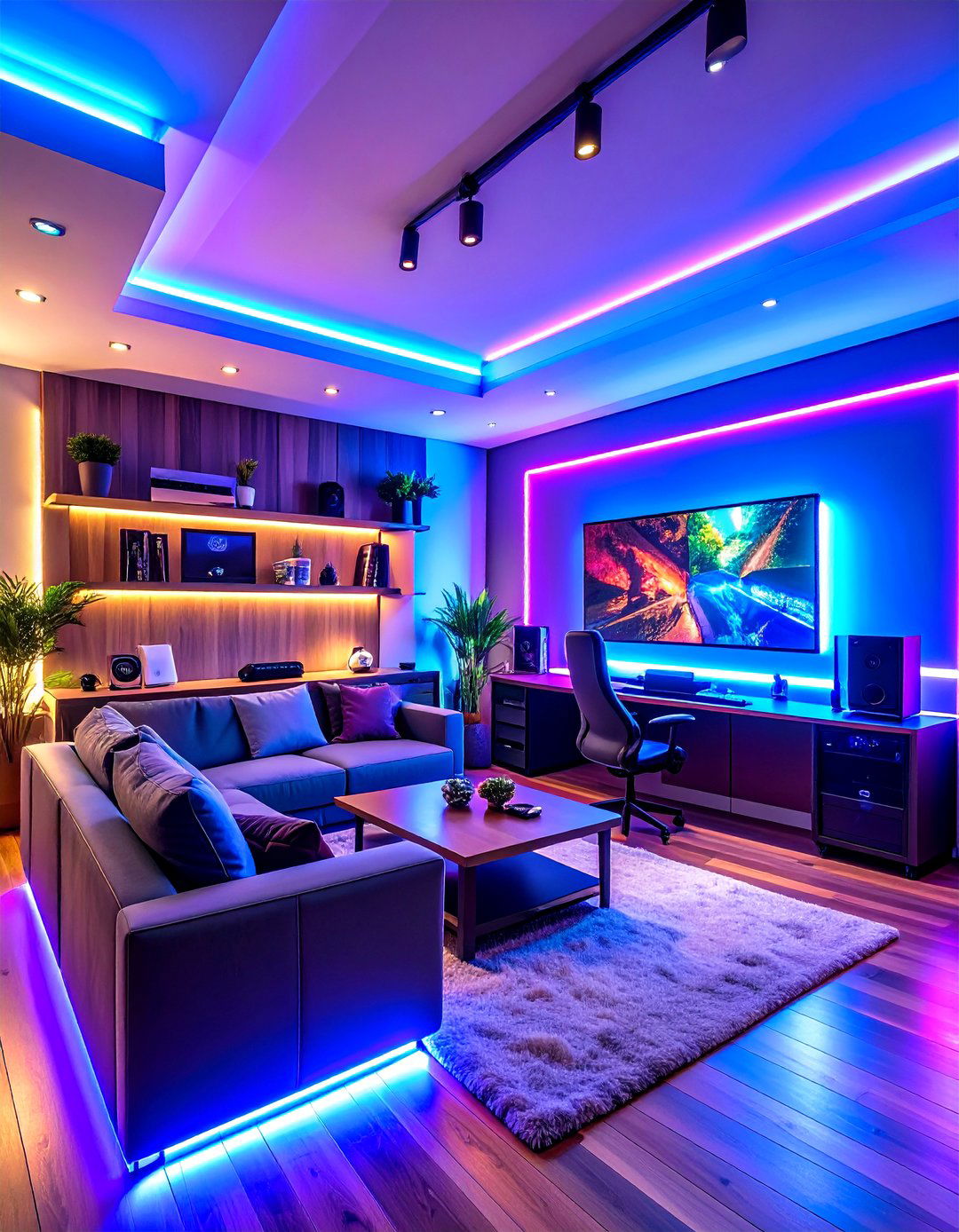
Gamers live for immersion, and basement lighting behind screens reduces eye strain while punching up excitement. Install RGBW LED strips around the TV perimeter; link them to bias-lighting apps that sample on-screen colors and echo hues in real time. When consoles power down, a simple warm-white scene feels cozy for casual streaming.
23. Charge-and-Go Emergency LED Fixtures
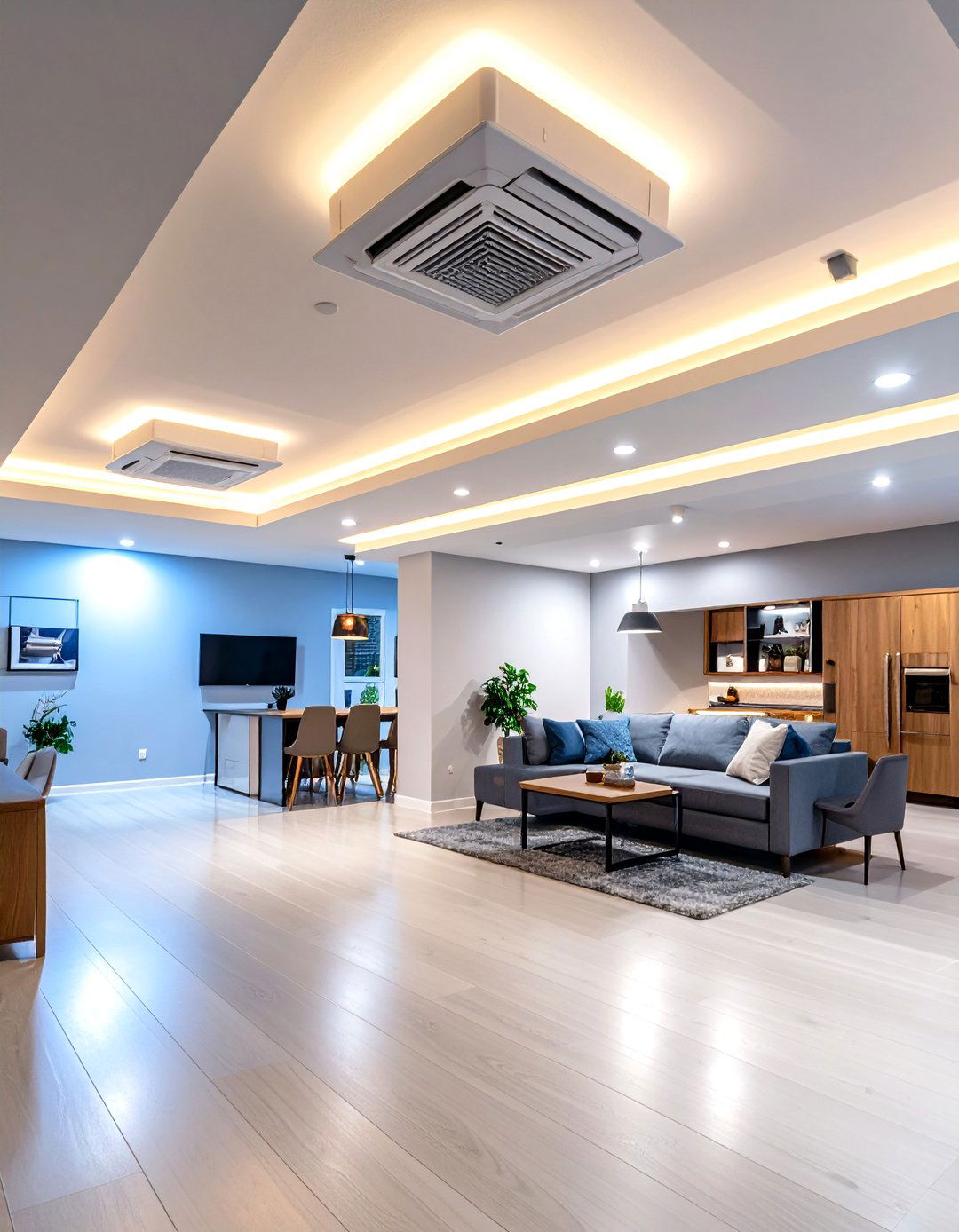
Power outages shouldn’t strand you in the dark. Modern fixtures with built-in lithium cells function as regular ceiling lights yet flip to battery mode the second mains voltage drops. In basements where breaker boxes live, that automatic glow makes troubleshooting safer and keeps sump-pump alarms visible even during storms.
24. Acoustic Panel Lights That Tame Echo and Glare
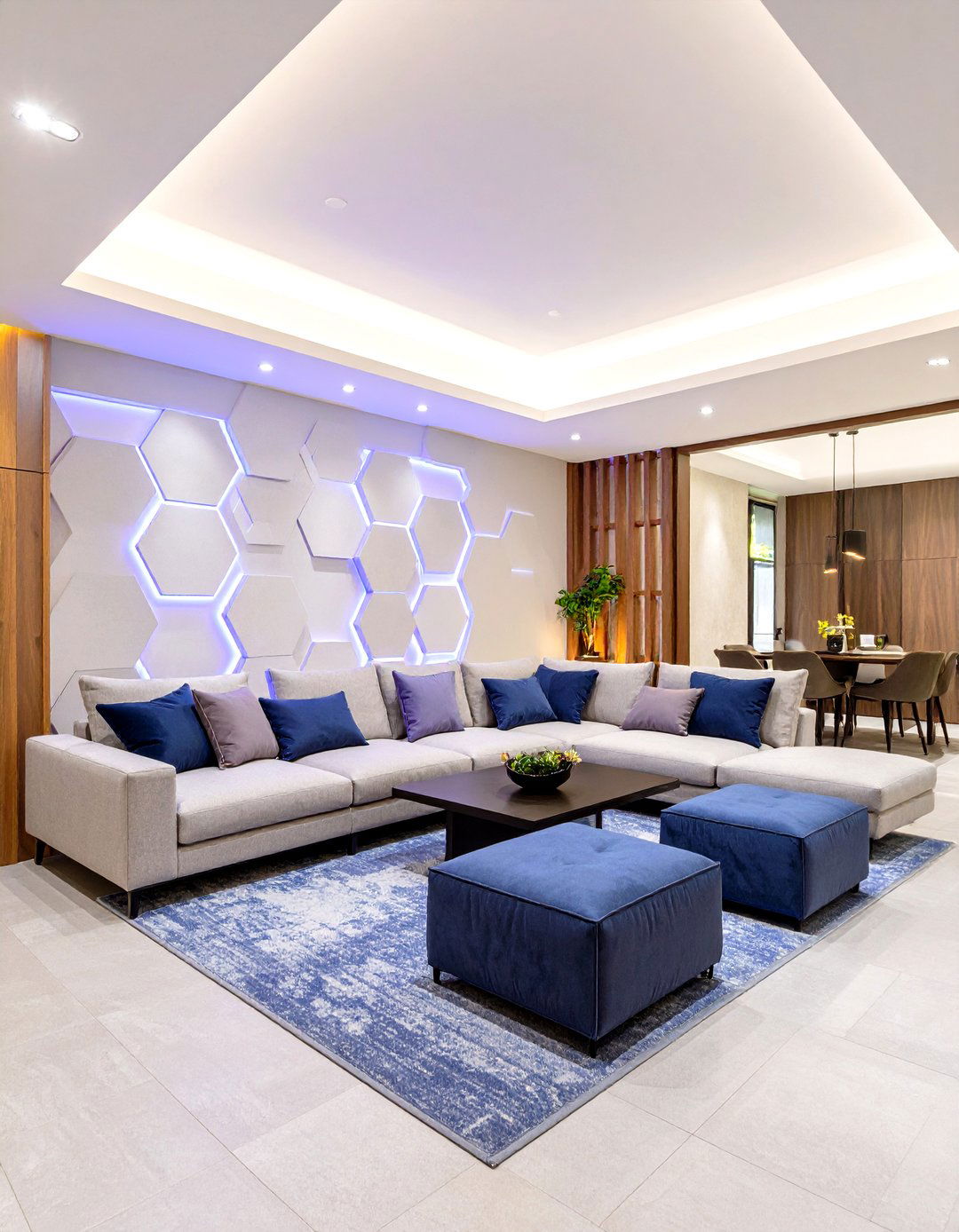
To wrap things up acoustically, combine sound-absorbing panels with integrated LEDs. Hexagonal “light tiles” soften slap echo common to concrete walls while spreading glare-free illumination across gaming lounges or podcast studios. Arrange them like wall art, wiring several into one dimmer circuit for sleek control.
25. Circadian Rhythm Basement Lighting Scheduler
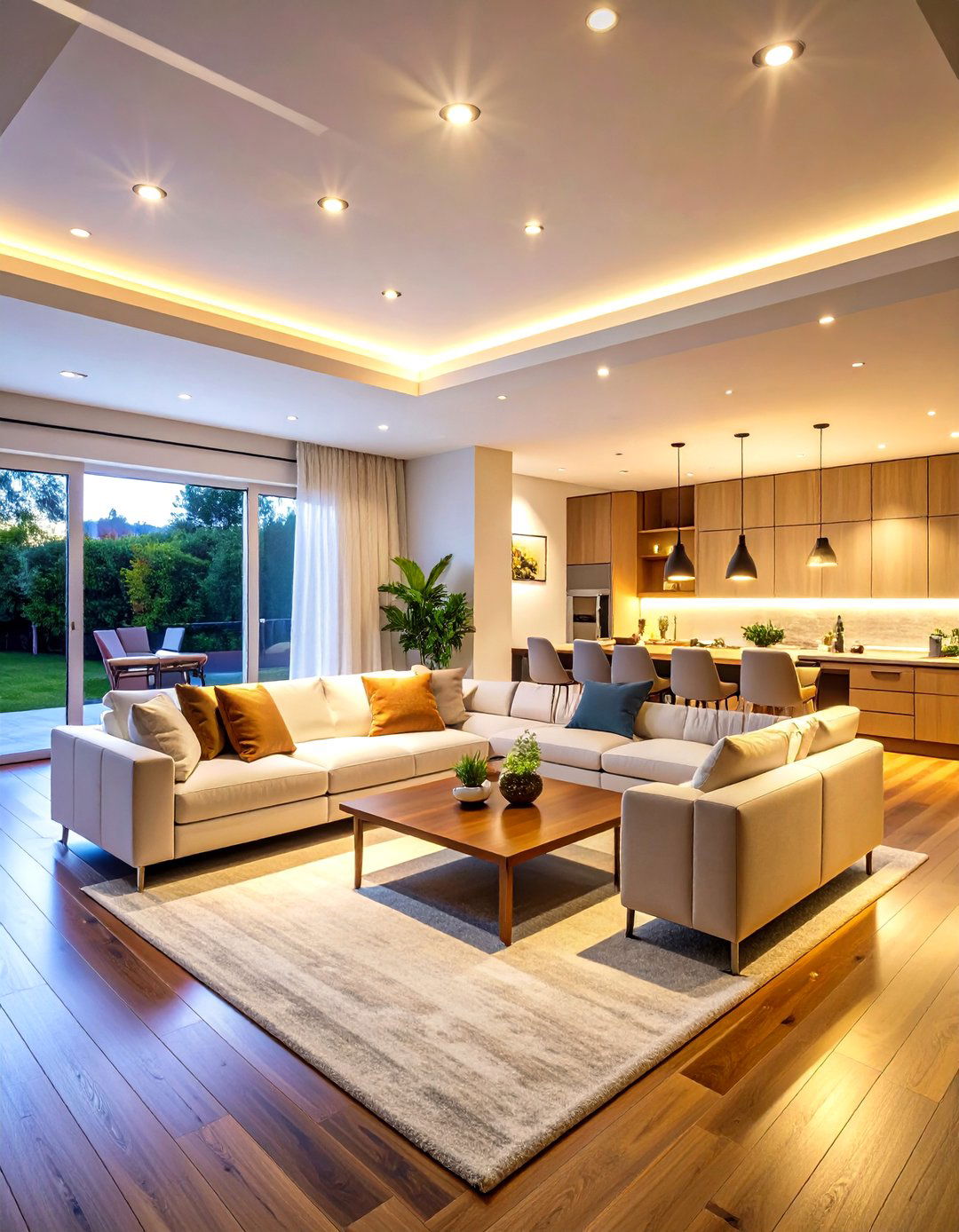
Finally, think beyond brightness: human-centric basement lighting shifts from energizing cool white at midday to amber warmth after dinner, nudging your internal clock despite the absence of windows. Smart hubs automate color temperature curves, syncing bulbs to local sunrise and sunset data so basement activities align with biology and improve evening wind-down.
Conclusion:
Great basement lighting marries science to style — layering efficient LEDs, choosing flattering color temperatures, and embracing smart controls that adapt to work, play, or rest. From recessed grids that erase shadows to artistic pendants that double as conversation pieces, every tip above helps reclaim square footage once dismissed as dim storage. Use lumens wisely, vary fixture heights, and never fear creative flourishes: the right glow transforms basements into vibrant, healthy extensions of everyday living.


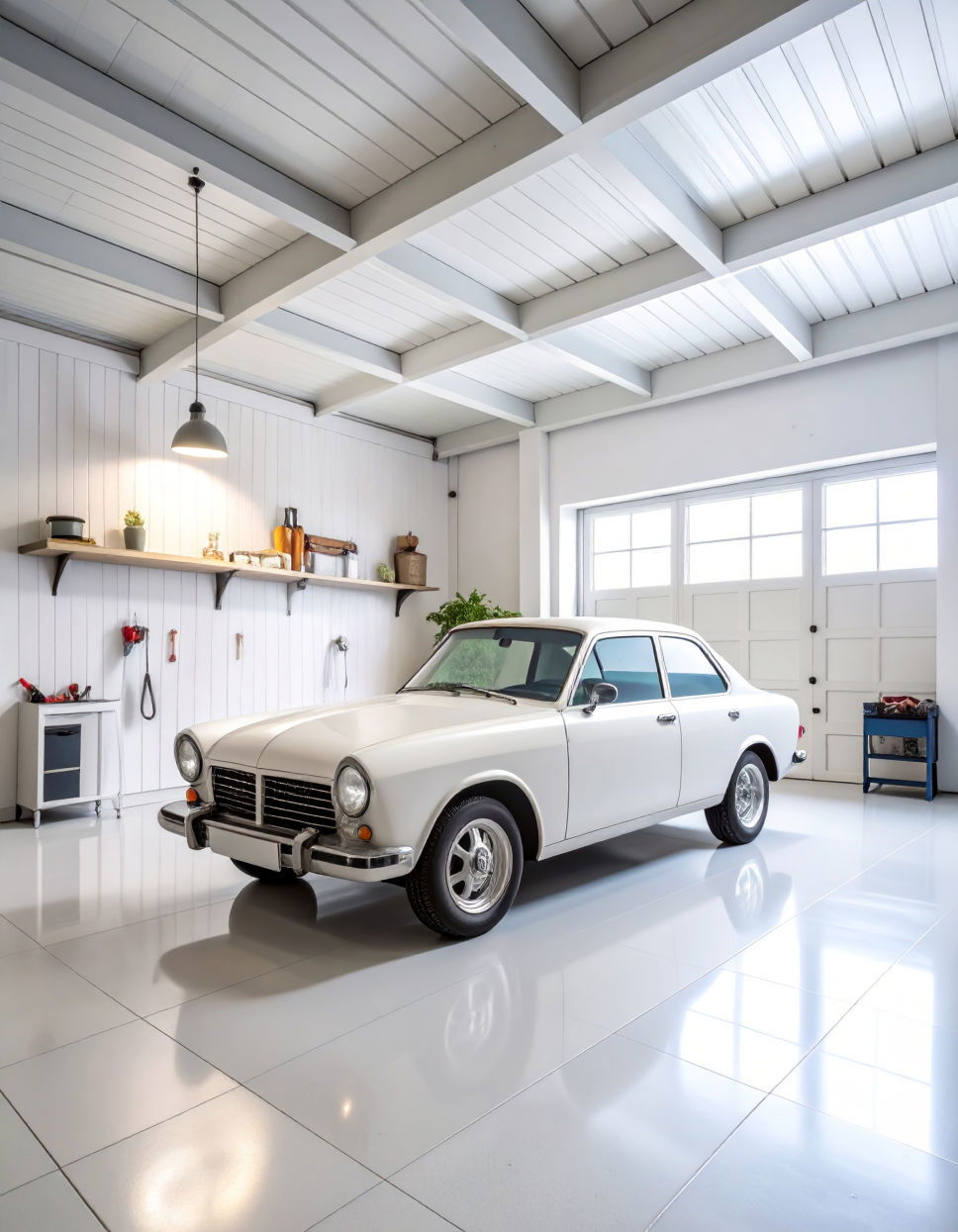

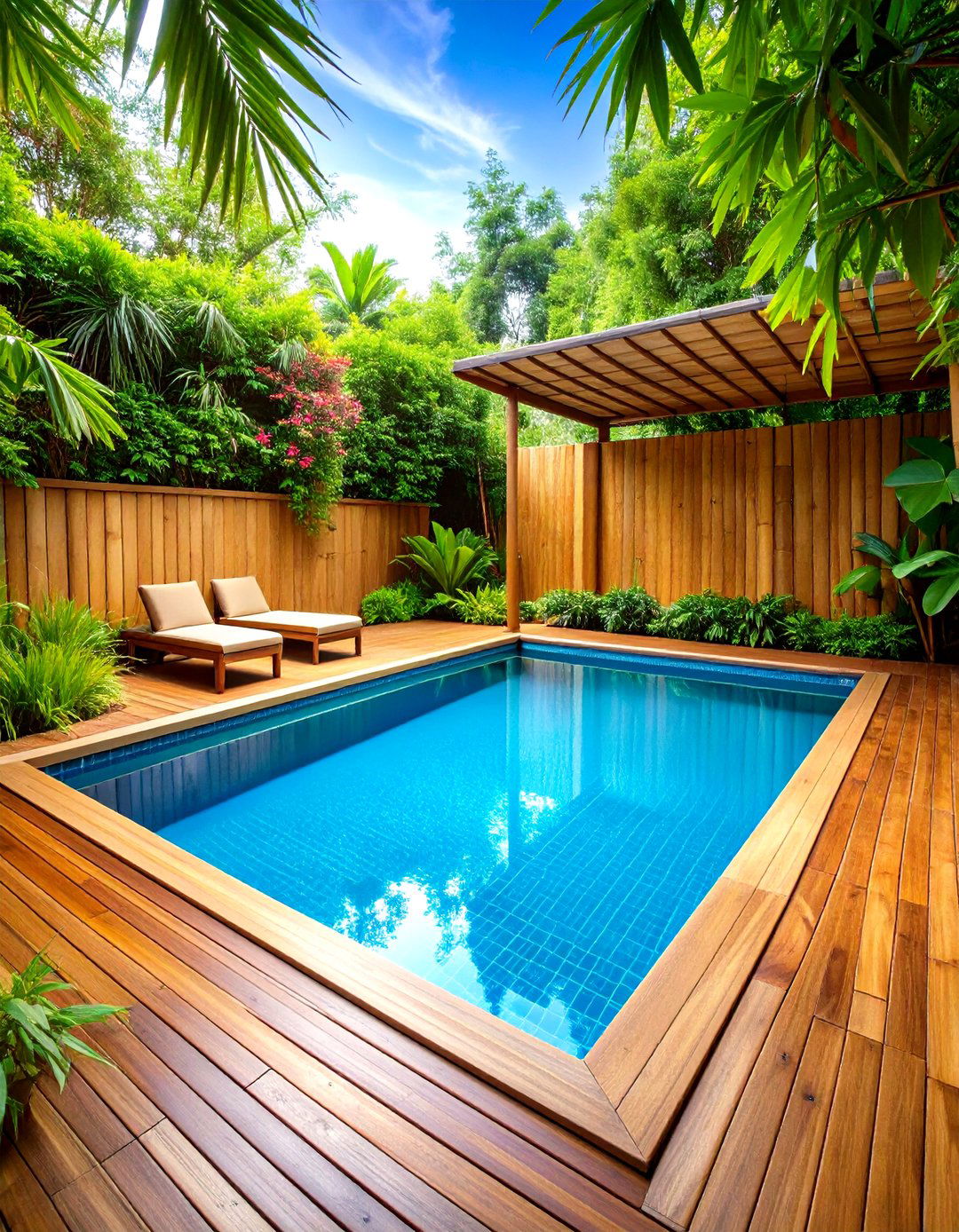
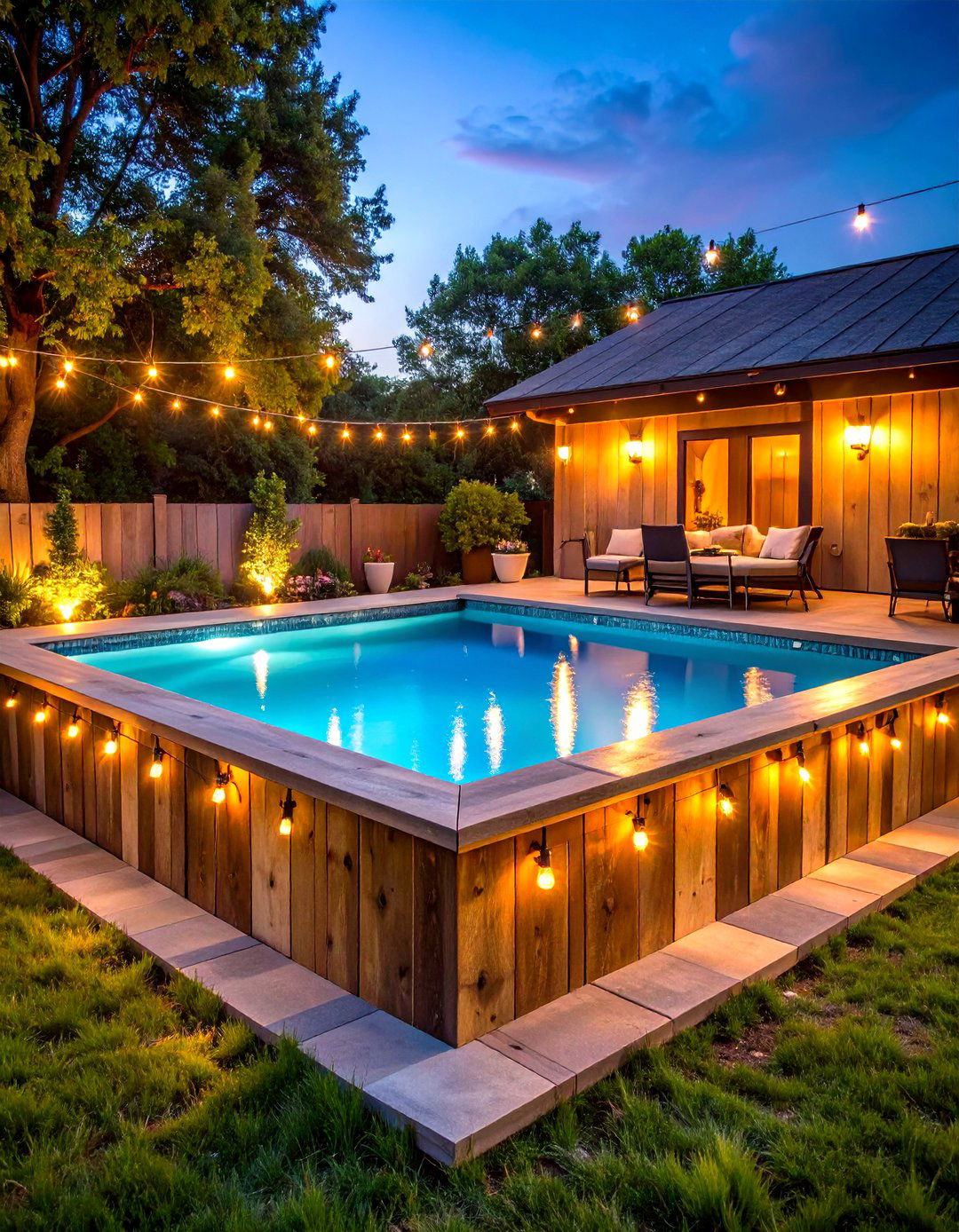
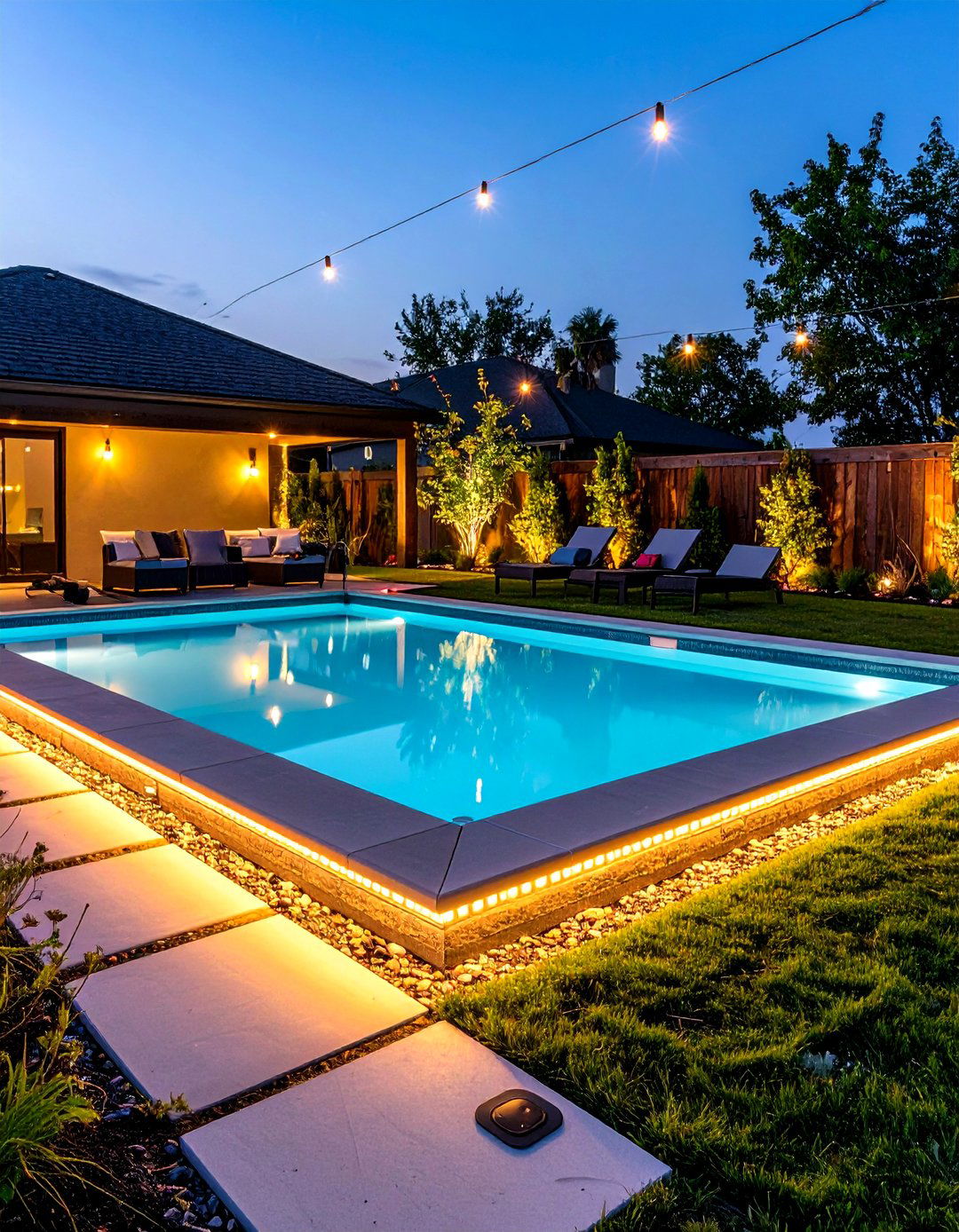
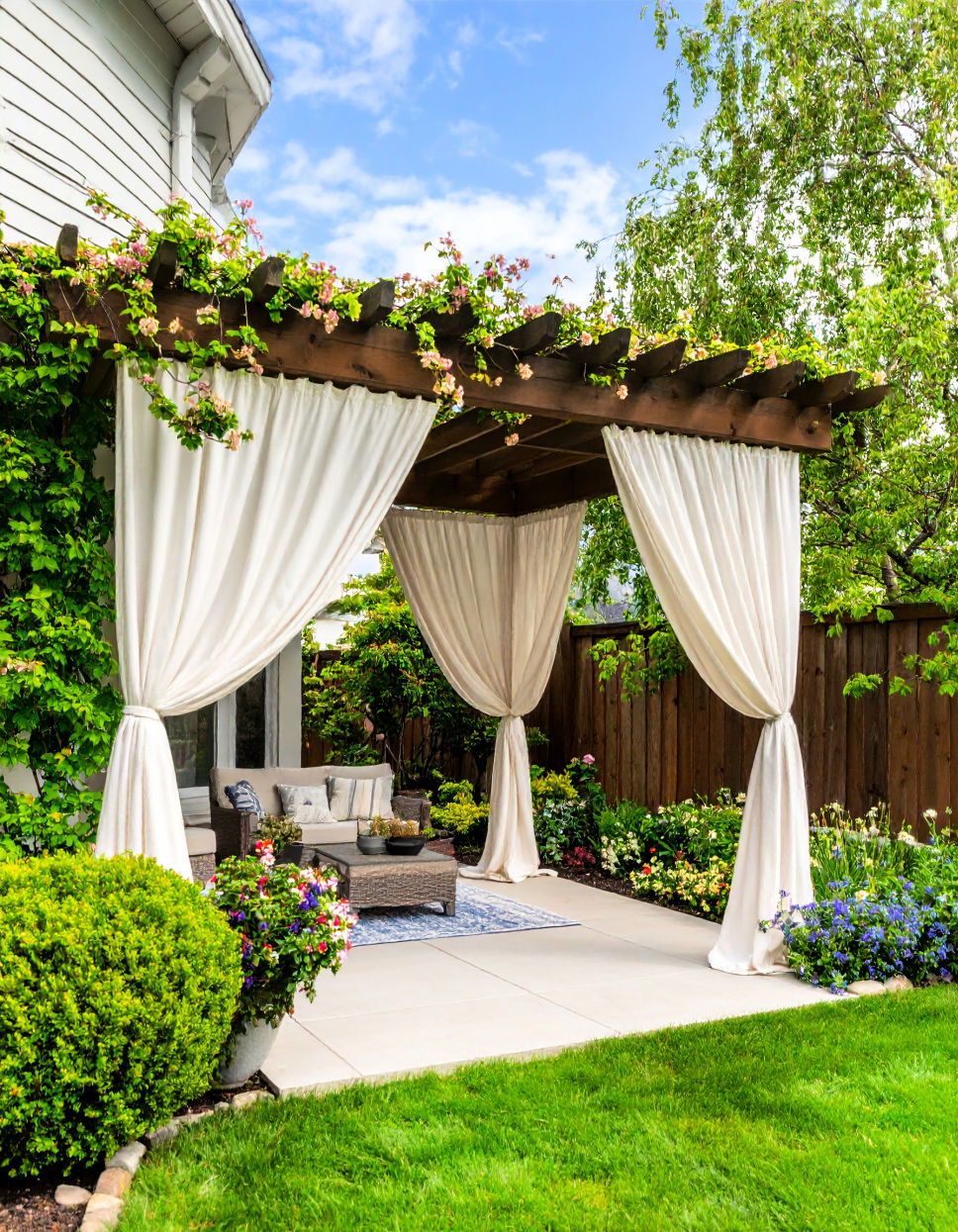


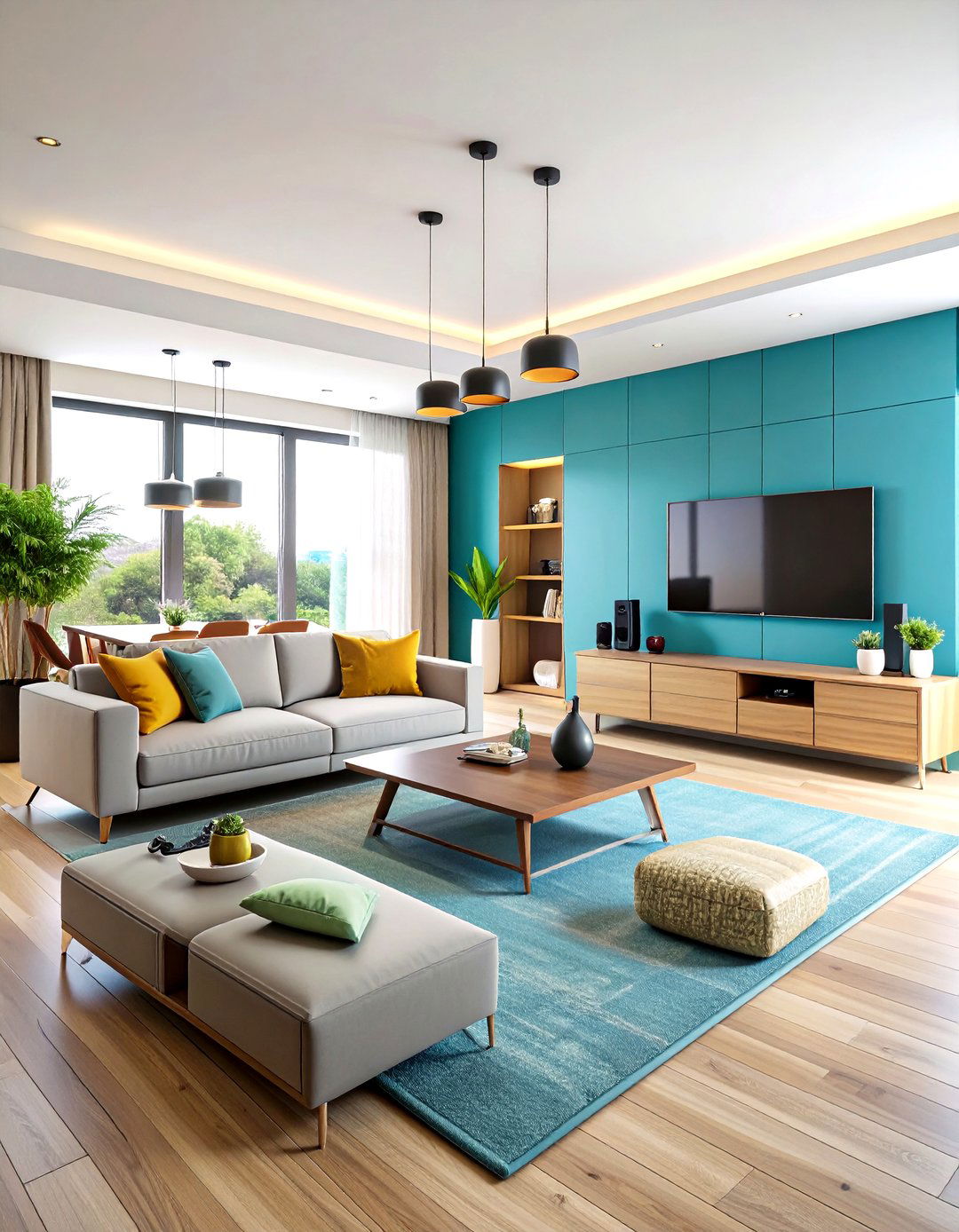
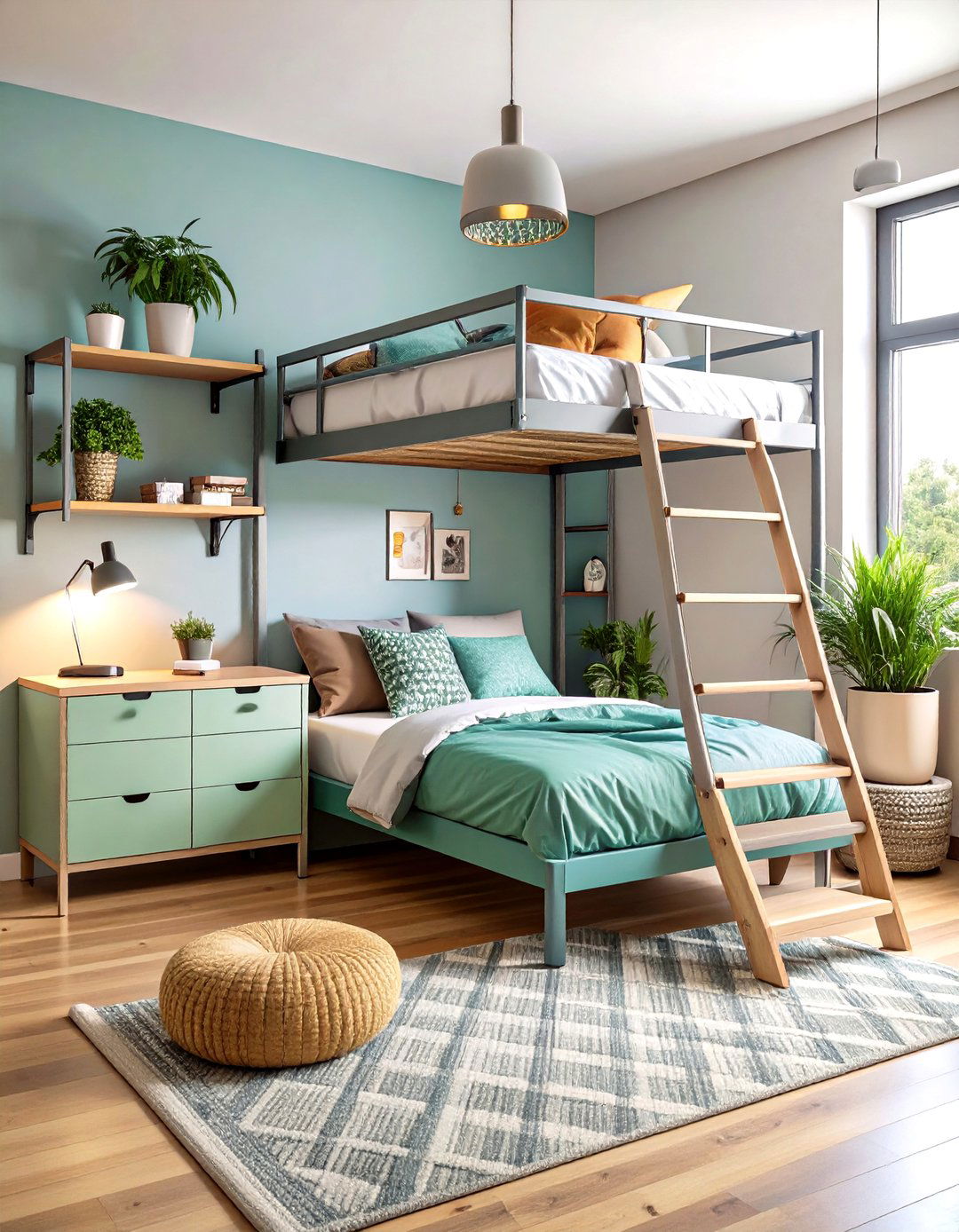

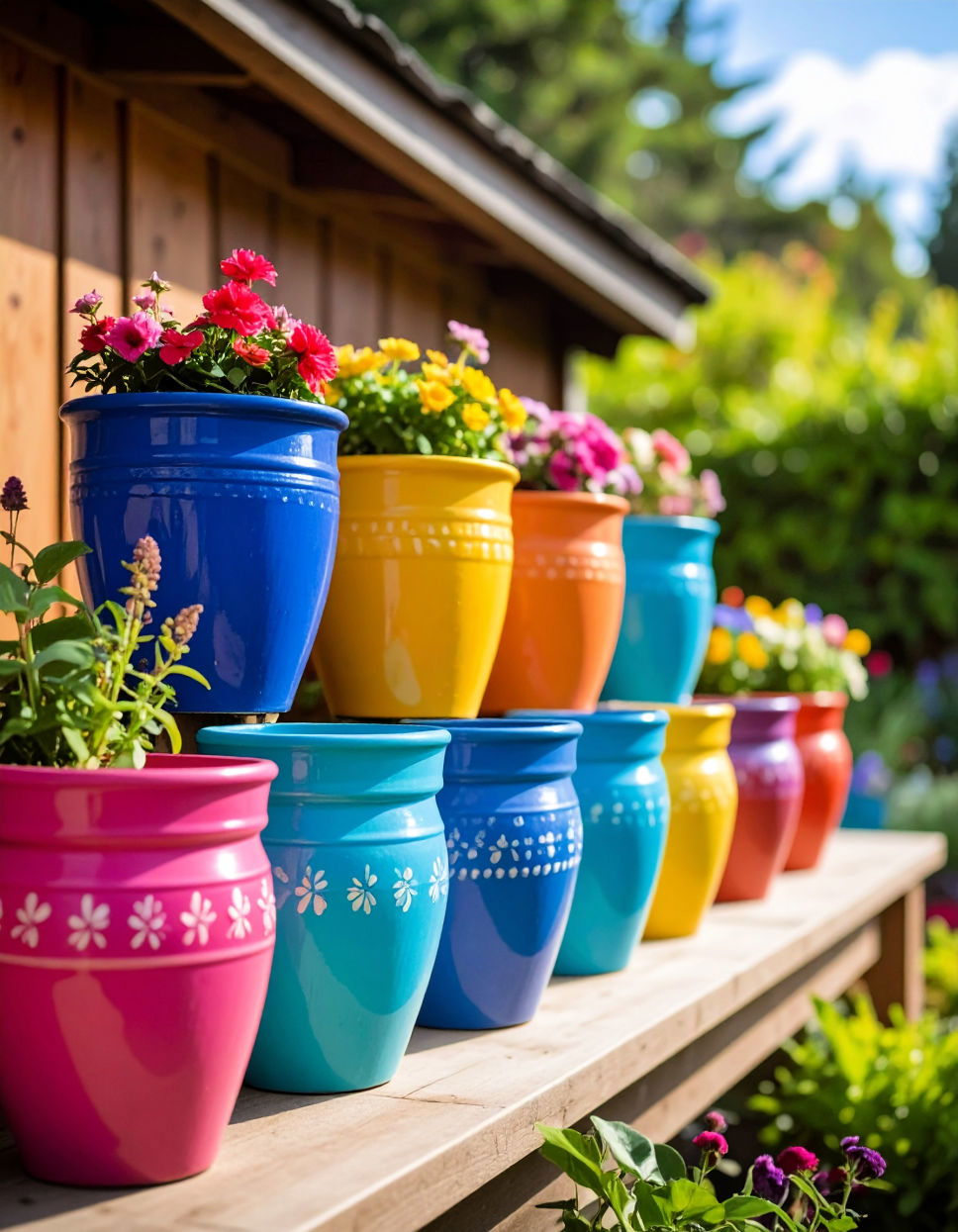

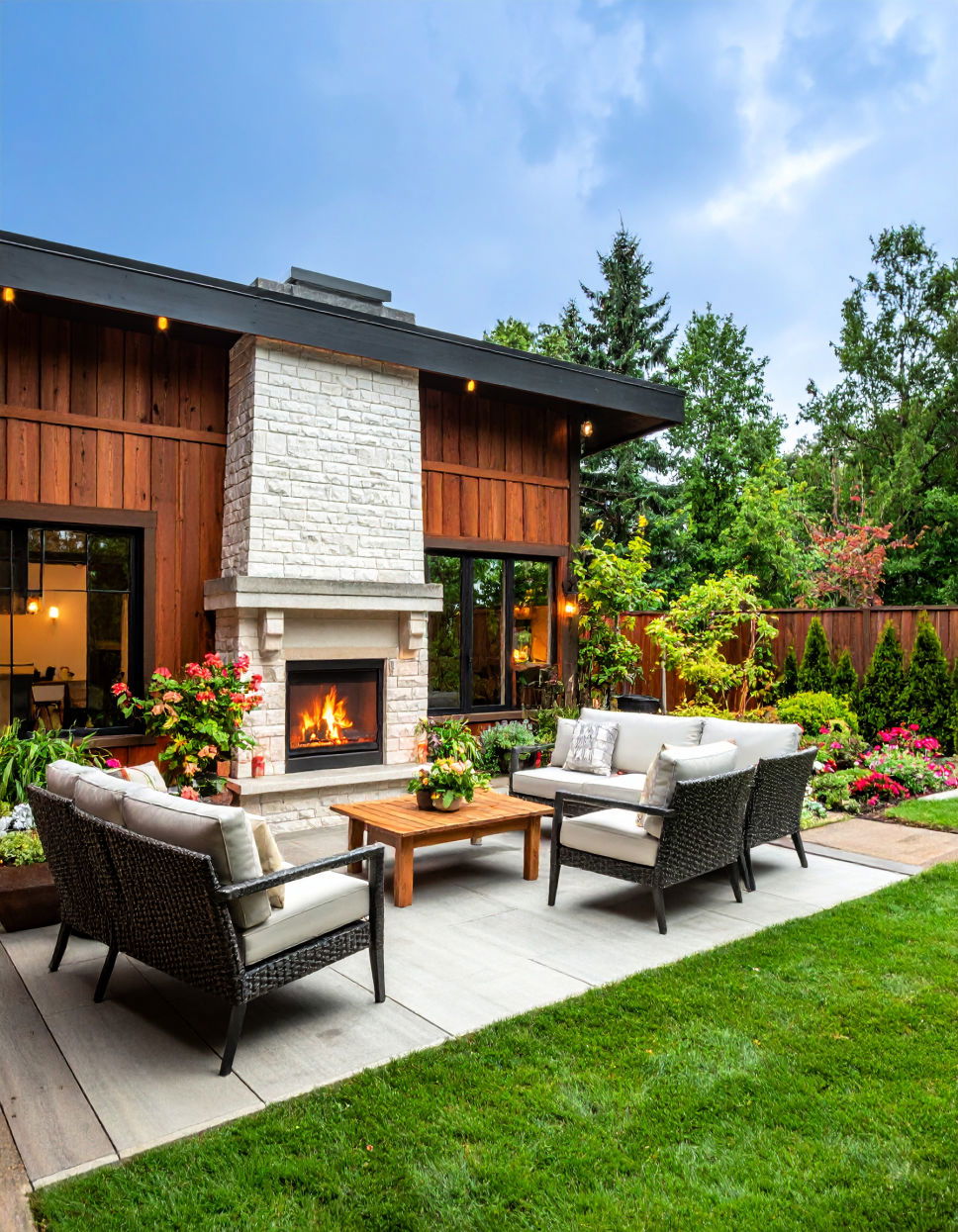
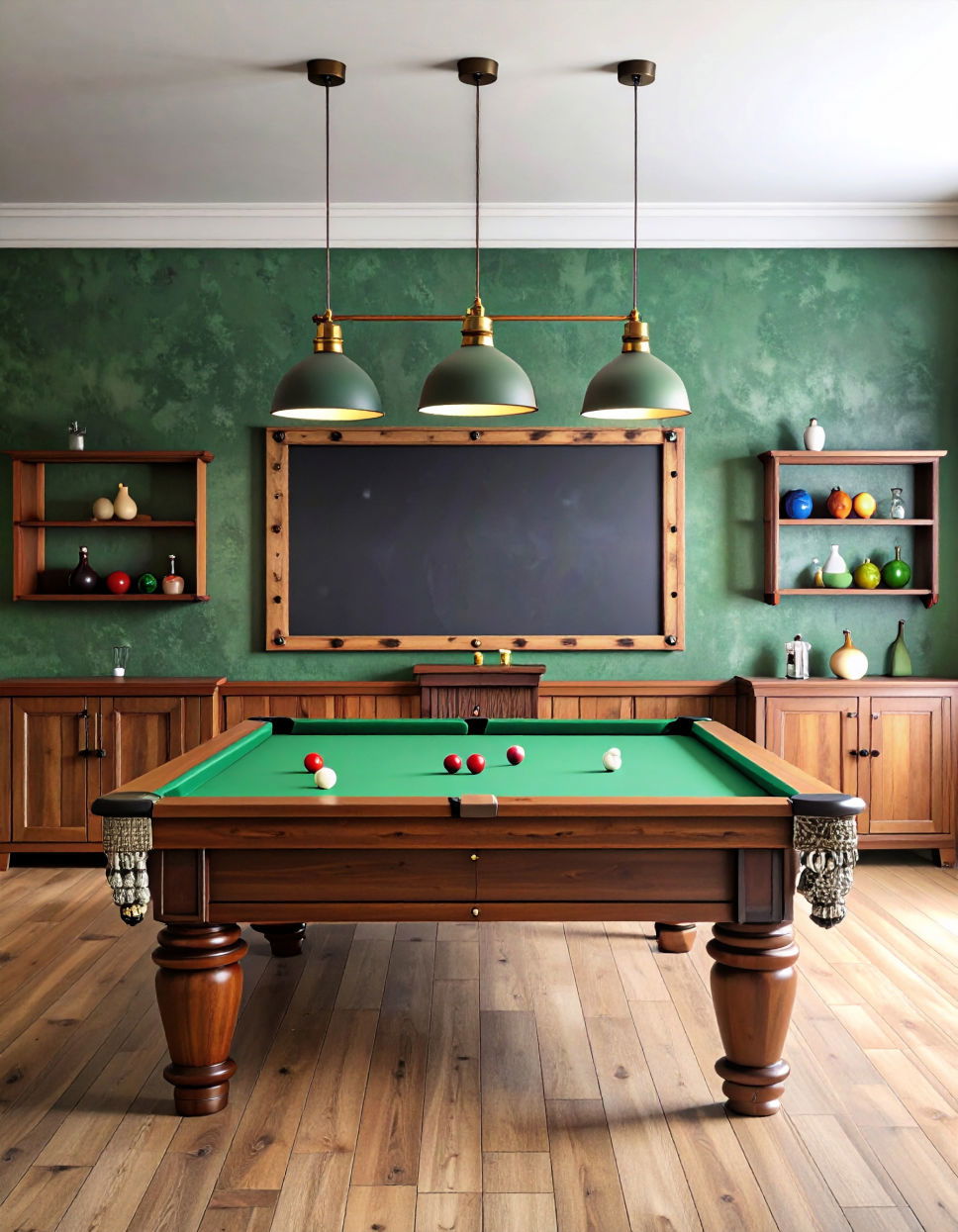
Leave a Reply